News
- Details
- Written by: Quintus Potgieter
- Category: Industry
Flash floods have been plaguing the planet in 2016. In June, flash floods forced the government of France to close the Louvre in Paris and 25,000 people were left without power. 500 miles away, Germany also experienced flash flooding that caused 5 deaths and left several people missing. Lest we forget the 2015/16 floods of Ireland and Great Britain. Storm weather also battered South Australia at the end of September, this year. Engineering industries were shut down due to the weather. Power stations went down and 80,000 people were without power in Adelaide. The storm was thought to be a "one-in-fifty-year" weather event.
 The fact that weather is delaying the work of engineering industries and leading to loss of life - in some countries - is not an understatement.
The fact that weather is delaying the work of engineering industries and leading to loss of life - in some countries - is not an understatement.
Now, South Africa has received a fresh bout of flash flooding due to stronger storms that are exacting cloudbursts over Johannesburg. The explanation behind why the sudden flooding events are happening relates to the weather cycle of El Niño's departure, and the onset of La Niña . Some are also pointing the finger at climate change to try and explain why the storms are so severe. South Africa has gone from unprecedented drought, and now is facing the same problem India is: replenishing water - but too much of it.
On Wednesday afternoon, severe storms caused flash floods in the South of Johannesburg. The South African Weather Service has said that extreme weather conditions will continue up until Friday. The N3 highway in Johannesburg saw flooding in both directions. Cars were swept away due to the high volume of water due to the rainwaters. A Twitter user @mandlamZA, wrote: "So clearly, our roads and highways were not built for the rain."
Flooding also cut off access to the country's main airport and forced airplanes to circle the airport before they could make a landing. As a result, flights were also delayed.
The City of Tshwane's Facebook account wrote: " Of late, four people died after a cloud burst at Midrand and OR Tambo, flooding the freeway at the Linksfield off-ramp. Massive water accumulated at low-lying areas of the freeway and many cars were caught up unexpectedly and covered with water up to their roofs."
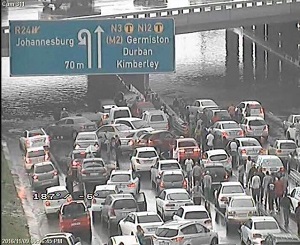 Municipal governments and civil engineers are now debating how to avoid deaths in flash flooding events. Low-lying areas are unfortunately in the crosshair of a storm and are more prone to flooding than built up areas at the top of hills. Citizens in shanty towns built along the Jukskei River were displaced due to the rising floodwaters there. The area was the worst hit, 200 families lost their homes.
Municipal governments and civil engineers are now debating how to avoid deaths in flash flooding events. Low-lying areas are unfortunately in the crosshair of a storm and are more prone to flooding than built up areas at the top of hills. Citizens in shanty towns built along the Jukskei River were displaced due to the rising floodwaters there. The area was the worst hit, 200 families lost their homes.
A disaster management center has started investigations into the drainage systems and general destruction of the floods.
Johannesburg Roads Agency director Sean Phillips said: "When you get very unusual rainfall like we had last night then it overloads the drainage system. It would be possible to design the drains to be able to cope with these extreme rains, which occur occasionally." The water exceeded the stormwater systems' capability.
The question that remains, globally, is, should governments be looking at storm drain redesigns in preparation for climate-change-level volumes of rainwater?
The Department of Civil Engineering at McMaster University in Canada has researched the topic in their study entitled Climate Change Impact on Design Storm and Performance of Urban Storm-Water Management System. They write:
A number of future climate projections indicate a likelihood of increased magnitude and frequency of hydrological extremes for many regions around the world. The urban storm-water management infrastructures are designed to mitigate the effect of extreme hydrological events. Changes in extreme rainfall events will have a significant implication on the design of strom-water management infrastructures.
The study they conducted found that even Canada's infrastructure would suffer under "future climate condition."
Over-capacity drainage systems can also lead to sewage making its way into the waterways. Including the aforementioned: transport systems and residential flood damage are the main areas of focus for drainage systems that are being pushed past their capacity with the increase in water volume that the world is experiencing.
- Details
- Written by: Quintus Potgieter
- Category: Industry
Sinkholes. They swallow houses, they devour cars. They eat up road, and they're happening around the world. A section of a five-lane street in Japanese business district Fukuoka was swallowed on Wednesday in what is being called a sinkhole. Subways were delayed and 800 houses were left without power. The sinkhole happened uncomfortably close to other buildings, so officials evacuated the people in the surrounding area to minimize the chance of any injury due to exploding gas lines or any further sinkholes. There were no injuries reported.
The Mayor of Fukuoka said that the sinkhole occurred due to construction on a subway line extension nearby the collapsed road. Exposed, severed sewage pipes leaked water into the sinkhole due to the collapsing of the street.
The United States has also had its fair share of sinkholes. The worry with sinkholes happening on roads, especially in America, is that gas transmission lines and subways could be affected by collapsing sections of road - very much like Japan. Donald Trump has promised that under his presidency, roads would be repaired.
Construction works play a part in making surrounding areas' ground unstable. A 2005 book named Sinkholes and Subsidence: Karst and Cavernous Rocks in Engineering and Construction details how sinkholes induced by ground disturbance occur.
Vibrations from construction traffic could conceivably induce sinkholes in unstable soil cover, but their effects appear to be masked by the greater influence imposed by drainage modifications.
Vibration caused by cars driving over unstable roads are also a contributing mechanism that can cause the roads to collapse. This happens if the road is already weakened by something like other construction work or more pressing issues like burst pipelines.
Water erosion is usually also factored in when explaining why a sinkhole happened, however, vibration seems to be what the municipal government of Fukuoka is going with.
Construction crews are working around the clock to have the street repaired by next week. Workers will also presumably get back to work once the street is repaired. Fukuoka's Municipal Government is patching the road up with cement. Government officials say that 7,000 cubic meters of soil are required to repair the street.
The certain kind of sinkhole observed in Japan is called a cover-collapse subsidence hole. It suddenly appears and continues to collapse. Engineers that are experienced in sinkhole remediation are now tending to the sinkhole in Japan. The support beams of buildings were exposed during the collapse, and as a result, engineers now need to ensure the foundations of buildings are still reinforced and not affected by the sinkhole.
- Details
- Written by: Quintus Potgieter
- Category: Industry
The U.S. Presidential Election has finally arrived after one of the longest campaign cycles in recent history. The winner of this presidential election will become the leader of the free world and have a monumental task ahead of them. There are only a few hours to go before the leader in the polls is announced, and as a result becomes the president. The stock market nervously waits in the wings to either congratulate or deflate depending on who wins. The reality is, some engineering industries, depending on who wins, could be seeing tough times ahead. The Economist magazine called a Trump presidency the third biggest “source of global risk”.
 Engineers and business leaders should not make the mistake of thinking that politics doesn’t influence the outcome of their jobs in the future. In the final rally Donald Trump gave on his campaign trail, he promised that today’s election day would be called BREXIT PLUS after he won the presidency. The engineering implication of calling it BREXIT PLUS means that engineering industries are about to be clouded in uncertainty due to the conflicting opinions of both Hillary Clinton and Donald Trump.
Engineers and business leaders should not make the mistake of thinking that politics doesn’t influence the outcome of their jobs in the future. In the final rally Donald Trump gave on his campaign trail, he promised that today’s election day would be called BREXIT PLUS after he won the presidency. The engineering implication of calling it BREXIT PLUS means that engineering industries are about to be clouded in uncertainty due to the conflicting opinions of both Hillary Clinton and Donald Trump.
A post-Brexit engineering study conducted with the help of 424 engineering respondents, revealed some illuminating facts. The respondents were from “energy, transport, defence, oil and gas, agriculture and marine” industries. 64% of the respondents said that the EU was instrumental to their businesses. 62% said they were employing EU citizens. And once Britain opted to exit the European Union those relationships were in trouble. Worries about foreign investment into engineering industries also became very real.
Thus, the same industries in America could experience a slip-and-slide of emotions especially in energy, oil and gas, and defence. In truth, many industries are sitting on the edge of their seat to see if things stay the same with a Hillary Clinton presidency or drastically change with a Donald Trump presidency. Some engineers celebrated Brexit, others didn’t. Therefore, a study of how engineering industries will react to a Clinton presidency versus a Trump presidency is needed.
IF DONALD TRUMP WINS THE PRESIDENCY
Based on Trump’s campaign rhetoric, industry could be expecting major change and - in his opinion - a return to form. The industries that would see a massive, instantaneous bump in the stock market would be:
Military Defence industry: Lockheed Martin manufacture military defence equipment. Trump has famously said he will amp-up the military expenditure once he gets into office to ensure that America has the strongest military in the world. Aeronautical engineers would greatly benefit under this plan.
u>Infrastructure: Construction industries will see money coming in as The Don would say, “big league.” Trump has criticized the lack of road maintenance and the third-world state of America’s airports. Caterpillar is expected to benefit from a Trump presidency. Trump has said he wants to bring industry and jobs back to America, and in turn, make America great again.
Manufacturing: Trump also deeply criticized companies like Ford who had migrated some of their operations to countries like Mexico, and called for manufacturing to be brought back to America. Trade and immigration are very big question marks in Donald Trump’s America. To what extent, we don’t know. Many a time, engineering professionals immigrate to other countries to use their very specific set of skills on international projects. Would they be welcomed in Trump’s America?
 Construction: Not to mention that wall that Trump supposedly wanted to build. He eventually said that Mexico would be paying for it - to which the Mexican president said a resounding “no”. The 50-foot, 2,000-mile wall would require construction if they go through with it. CNBC estimated back in March that the wall would potentially cost $25 billion to construct. A Mexican architecture firm named Estudio 3.14 also produced this render of what the wall might look like./b>
Construction: Not to mention that wall that Trump supposedly wanted to build. He eventually said that Mexico would be paying for it - to which the Mexican president said a resounding “no”. The 50-foot, 2,000-mile wall would require construction if they go through with it. CNBC estimated back in March that the wall would potentially cost $25 billion to construct. A Mexican architecture firm named Estudio 3.14 also produced this render of what the wall might look like./b>
Moreover, The energy production industry will experience a shake-up due to Trump’s position on global warming. What will receive the bump it has been lacking will be the oil industry. Trump has also said that the Keystone XL Pipeline, that Barack Obama vetoed, will go ahead.
The concept of global warming was created by and for the Chinese in order to make U.S. manufacturing non-competitive.
— Donald J. Trump (@realDonaldTrump) November 6, 2012
In the last presidential debate in September of this year, Trump said: “Hillary Clinton wants to put all miners out of business.” Trump also swears by clean coal. He said: “There is a thing called clean coal. Coal will last for 1,000 years in this country. Now we have natural gas and so many other things because of technology. We have unbelievable -- we have found over the last seven years, we have found tremendous wealth right under our feet.”
F HILLARY WINS THE PRESIDENCY
 Something that Hillary has, that Donald doesn’t, is a renewable energy plan. And this has an effect on what kind of engineers America will be employing. Clinton wants to cut U.S. oil dependency by one-third by 2027. She also wants the U.S. to generate 33 percent of its energy capacity from renewable sources by that date. $60 billion will be given to that initiative and will see engineers seeing the benefit of being involved in those industries. But what about the other energy engineering industries? Obama has been delaying the advancement of oil pipelines, most notably, the Keystone XL Pipeline.
Something that Hillary has, that Donald doesn’t, is a renewable energy plan. And this has an effect on what kind of engineers America will be employing. Clinton wants to cut U.S. oil dependency by one-third by 2027. She also wants the U.S. to generate 33 percent of its energy capacity from renewable sources by that date. $60 billion will be given to that initiative and will see engineers seeing the benefit of being involved in those industries. But what about the other energy engineering industries? Obama has been delaying the advancement of oil pipelines, most notably, the Keystone XL Pipeline.
In September 2015 Hillary Clinton said: “I don’t think we need to have a pipeline bringing very dirty oil, exploiting the tar sands in western Canada, across our border.” She said pipelines “distract [America] from the real challenges facing the the energy sector.”
Hillary also stated: “On my first day as President, I'll set two big goals. I want the U.S. to have half a billion solar panels by 2020. And I want us to generate enough renewable electricity to power every home in America in the next 10 years. With the right investments, we’ll create good-paying jobs and make America the world’s clean energy superpower.”
Furthermore, one of the industries Hillary would’ve single-handedly boosted during this election is the state-owned and private cybersecurity companies - some have already been established and are generating huge profits. Hillary famously said that Wikileaks had acquired the Democratic National Committee, her, and her campaign manager’s private emails from a Russian source. She said that the Russians were trying to interfere with the presidential election. Whether or not the emails were from the Russians, Clinton might have just handed a battalion of site reliability, network, and cybersecurity engineers new jobs due to her cybersecurity paranoia.
Ted Koppel, American journalist, who wrote the book Lights Out, focusing on cyber attacks on America’s electric grid, spoke to CNN, saying: “We live in an age where walls physically don't mean anything. Cyber attacks go right past walls. They can be enabled no matter where in the world you are.” Therefore, cybersecurity companies will be seeing an unprecedented level of investment.
Should engineers pursue politics?
The Dean of Engineering at the Engineering Institute of Technology, Steve Mackay, has spoken about where politics and engineers intersect. He said:
You have to get involved because [in politics] because you as engineering professionals have something more than most of these people in these parliaments have and that is that you are considerably more objective in what you do. A lot of the parliaments are riddled with lawyers, accountants and people that perhaps don't have the necessary technical knowledge to make considered technical decisions. Obviously, engineers have got potential problems ; building nuclear power plants, contaminating water and things like that - that we need to avoid. But really, you do have a major contribution.
- Details
- Written by: Steve Mackay
- Category: Blog - Steve Mackay
Sherlock Holmes, that incredible detective, would be impressed with the new technologies and lateral thinking being employed to detect the ever more silent submarines (or subs) lurking below the surface of our oceans. Sonar (or acoustics) has been used in the past but is rapidly being ineffective.
Dear Colleagues
 Sherlock Holmes, that incredible detective, would be impressed with the new technologies and lateral thinking being employed to detect the ever more silent submarines (or subs) lurking below the surface of our oceans. Sonar (or acoustics) has been used in the past but is rapidly being ineffective.
Sherlock Holmes, that incredible detective, would be impressed with the new technologies and lateral thinking being employed to detect the ever more silent submarines (or subs) lurking below the surface of our oceans. Sonar (or acoustics) has been used in the past but is rapidly being ineffective.
The thinking and approach to finding new technologies is quite inspirational and is not confined only to subs but could surely be used in a huge variety of other fields (e.g detecting sharks/rescuing people etc).
Debye Effect
Other approaches have been used to employ disturbances in the Earth’s magnetic field caused by the metal hull (referred to as MAD or magnetic anomaly detectors) but these require the detector to be relatively close to the sub.
A particularly novel approach in tracking subs is referred to as the Debye Effect and this relies on a magnetic signature of the sub’s wake. Sodium Chloride (NaCl) is the key component of sea water and physical movement (from a passing vessel) tends to shake the Na and Cl ions around with a resultant weak magnetic field created (called the Debye effect). The Russian, Chinese and American governments are racing against each other in coming up with a solution to apply this effect to a workable technology.
Technology Used to Beat Detection
On the other side of the fence, needless to say, the various navies around the world are spending a lot of money on new technologies to hide their very expensive submarines. One is use of fluid cloaking which alters the flow of water over the submarine to make them appear invisible. Acoustic cloaking on the other hand uses materials to refract sound waves (from a sonar) around the submarine and thus to hide it more effectively.
We can go far further than Subs – think of the incredible opportunities
I do realize that this is all specifically about detecting submarines but these technologies can be applied to a myriad of other uses. For example, detecting sharks near beaches or helping with rescuing people or tracking whales and general fish stock are all ideas that come quickly to mind.
Perhaps, a clever solution to hiding (subs, for example) is as per Robert Ferrigno’s (Sins of the Assassin) suggestion: Best place to hide was in a crowd.
Yours in engineering learning
Steve
Mackay’s Musings – 8th Nov’16 #625
780, 293 readers – www.eit.edu.au/cms/news/blog-steve-mackay
- Details
- Written by: Evangeline Newby
- Category: Announcements
EIT is accepting applications to join the January 2017 intakes of each of the Master of Engineering Degrees as listed below. Applications are closing soon but will be accepted until December 16, 2016; apply today and secure your place on the limited places now available!
- Master of Engineering (Industrial Automation)
- Master of Engineering (Electrical Systems)
- Master of Engineering (Safety, Risk and Reliability)
Applications for the January 03, 2017 intakes will close December 16, 2016.
Proposed Master of Engineering Degrees
Our R&D team is working busily in the background to ensure we at EIT can offer you even more cutting edge Master degrees. There are six (6) new programs currently being worked on and we want to hear your thoughts on the proposed Master of Engineering degrees as listed below.
- Master of Engineering (Civil: Structural)
- Master of Engineering (Civil: Railway Infrastructure)
- Master of Engineering (Civil: Transportation)
- Master of Engineering (Mechanical)
- Master of Engineering (Electrical and Instrumentation in Oil and Gas)
- Master of Engineering (Chemical and Process)
View full details of these proposed degrees here: www.eit.edu.au/proposed-master-engineering-degrees.
We are excited at the prospect of being able to offer you even more Master of Engineering degrees in the future.
- Details
- Written by: Quintus Potgieter
- Category: Industry
A pipeline explosion in the United States on Monday has forced the Governer of Alabama, Robert Bentley, to declare a state of emergency. The pipeline explosion killed one and injured six workers. The subsequent fire as a result of the explosion has caused damage to what is known as the Colonial Pipeline which delivers gasoline to millions of customers. The South and Eastern United States regions will face gas price hikes and some will face shortages due to the pipeline's damage. The shutdown will affect 13 states.
 The accident happened on October 31st, 2016, when a contractor struck a 36" below ground transmission gasoline pipeline. Repairs were being done on the pipeline after a previous pipeline rupture on September 9th, 2016. The previous rupture caused a big gas leak that was considered to be the pipelines biggest leak in 20 years.
The accident happened on October 31st, 2016, when a contractor struck a 36" below ground transmission gasoline pipeline. Repairs were being done on the pipeline after a previous pipeline rupture on September 9th, 2016. The previous rupture caused a big gas leak that was considered to be the pipelines biggest leak in 20 years.
"My thoughts and prayers are with the six injured workers and with the family of the fatally injured worker. An accident of this magnitude is tough for any community to deal with, and I want to personally thank the local first responders for their immediate assistance to this accident, as well as the first responders from surrounding counties," said Governer Bentley.
The Alabama Department of Environmental Management is now monitoring the air where the explosion occurred to ensure that the area is safe and not contaminated. It is the gasoline line that was ruptured, however, the other transmission lines are still operational, which deliver diesel, jet fuel, and other petroleum products. The Colonial Pipeline carries 2.5 million barrels of fuel a day - that fuel delivery is what has been delayed due to the explosion.
The State of Emergency will last until December 1st, 2016.
The pipeline explosion is not good news for the Energy Transfer Partners.The company is trying to emphasize the safety of oil pipelines to persuade the public that the Dakota Access Pipeline should be built. They have been assembling the pipeline that is to span four states wide. It will reportedly cost $3.8 billion and will transport 470,000 barrels of "light sweet crude oil" from North Dakota, all the way to Patoka, Illinois, twenty-four hours a day. The pipeline has been protested against for months. Business Insider confirms that since 1995, there have been 2,000 "significant" oil and gas pipeline accidents. They also reported that from 2013 to 2015, more than one hundred accidents happened every year. The Colonial Pipeline accidents have shown that human error very much an area of concern for the pipelines.
Here is footage of the Colonial Pipeline's damage and the subsequent fire that ensued:
- Details
- Written by: Quintus Potgieter
- Category: Developments
South Africa is celebrating their Wind Energy Week, this week. A week that will focus the minds of business leaders and engineers, all over the country, on the positive effect more wind energy infrastructure could have in the country. Most notably, a two-day conference is being held in Cape Town that will focus on the theme: Towards 100% Renewables. Three other events are also being held, all in the name of renewable energy with the specific focus on wind energy.
A report by Global Data predicted, by 2020, South Africa is looking to benefit from a further 3 gigawatts (GW) of  wind energy, that would bring the country to 5.6 GW. They are joining the 82 other countries in the world that benefit from wind turbine provided energy. South Africa is also in the top 10 renewable energy investment countries in the world, according to a report issued by Bloomberg last year.
wind energy, that would bring the country to 5.6 GW. They are joining the 82 other countries in the world that benefit from wind turbine provided energy. South Africa is also in the top 10 renewable energy investment countries in the world, according to a report issued by Bloomberg last year.
The country is currently chasing a goal of having 17.8 GW of production belonging to renewable energy, and natural gas supplying the other 3.1 GW. That would supply 82 percent of the power in the country. Presumably, the rest will be supplied via coal-fired power plants.
South Africa is moving towards natural gas and renewable energy production at a fast rate. A local ratings agency known as Moody's praised South Africa as the fastest-growing green economy in the world last year. Similarly, in the private sector, new malls and cities being built are all abiding by green standards.
South Africa's energy supply has struggled to cope with demand in recent years. Two coal-fired power stations - meant to bridge the gap - have seen construction delays for quite some time. As a result, loadshedding (forced rolling blackouts) had to be put into place to balance the grid. Therefore, engineers are looking to implement renewable solutions that could, in the future, power South African homes and businesses.
 The demand from the public for further renewable energy innovation in South Africa reached a pinnacle this week, in the form of a protest by Greenpeace. The NGO's members protested outside of the Shoprite headquarters in Cape Town yesterday, to demand that the the retailer (Shoprite is South Africa's biggest retailer) power their stores with renewable energy. Greenpeace claims that Shoprite has the worst track record pertaining to the adoption of renewable energy. This according to their report, Shopping Clean: Retailers and Renewable Energy. In the report, the organization states that companies should be committing to an ambitious 100% renewable energy goal.
The demand from the public for further renewable energy innovation in South Africa reached a pinnacle this week, in the form of a protest by Greenpeace. The NGO's members protested outside of the Shoprite headquarters in Cape Town yesterday, to demand that the the retailer (Shoprite is South Africa's biggest retailer) power their stores with renewable energy. Greenpeace claims that Shoprite has the worst track record pertaining to the adoption of renewable energy. This according to their report, Shopping Clean: Retailers and Renewable Energy. In the report, the organization states that companies should be committing to an ambitious 100% renewable energy goal.
"If Woolworths, for example, were to be 100% renewable energy powered, this would liberate enough electricity for 55,000 households in South Africa. Pick n Pay's electricity consumption is enough to power 65,000 households while Massmart and Spar could power 53,000 and 5,400 households respectively," the NGO wrote. Therefore, their protest outside of Shoprite's headquarters begins to make more sense.
Thus, South African companies could look to the example being set by companies overseas. IKEA, the international home furnishing store, has made a pledge that would see all of the stores in their chain powered by renewable energy by 2020. According to the Guardian, IKEA enjoyed a comfortable profit of $33 billion in 2015. Some of the profits will go toward funding photovoltaic solar solutions and WIND POWER.
Companies making high profits could build their own wind farms and put solar panels on their roofs. Walmart secured a deal with Pattern Energy to power their stores through wind farms.Other companies have joined the RE100 climate group, along with IKEA, in pledging that they will power their buildings only through renewable means. The companies include Apple, BMW Group, Coca-Cola Enterprises, Facebook, General Electric, General Motors, Google, Hewlett-Packard, Microsoft, Philips, Tata Motors, Walmart and more.
- Details
- Written by: Steve Mackay
- Category: Blog - Steve Mackay
We are assailed on a daily basis with inventions that will break the laws of Physics. Some are hard to disprove although eventually they are generally discredited. One only needs to think of the devices that were invented to provide perpetual motion. All stuff, nonsense and quackery.
However, there is a new kid on the block with a claim to overturn the Laws of Physics. A rocket drive.
Dear Colleagues
 We are assailed on a daily basis with inventions that will break the laws of Physics. Some are hard to disprove although eventually they are generally discredited. One only needs to think of the devices that were invented to provide perpetual motion. All stuff, nonsense and quackery.
We are assailed on a daily basis with inventions that will break the laws of Physics. Some are hard to disprove although eventually they are generally discredited. One only needs to think of the devices that were invented to provide perpetual motion. All stuff, nonsense and quackery.
However, there is a new kid on the block with a claim to overturn the Laws of Physics. A rocket drive.
The Third Law of Physics – Action and Reaction
As you will remember from high school physics: For every action there is an equal and opposite reaction. Rockets are a great example of this law in action. Gas pouring out of the rocket at high speed from combustion of the propellants results in the rocket being flung through space at a high speed in the opposite direction. Action and reaction at work and relatively easy to explain.
The propellants for the rocket are a huge disadvantage as they often require to be lifted up against the earth’s gravity with the payload being often a tiny 10% of the overall mass at lift off. So the question is thus: How can we dispense with the propellant and thus allow us to travel to the stars with panache?
Dr Roger Shawyer, in addressing this issue, has invented the EMDRive rocket which converts electrical energy into thrust with no need for a reaction mass. Microwaves are fed into the conically shaped EMDRive and bounce around giving a small net thrust.
NASA (through their Eagleworks lab) have recently verified thrust is being generated in contradiction to the laws of physics.
The laws of physics show that as nothing is actually emitted from the EMDrive, it surely cannot generate thrust.
So what gives?
My take on this is that it is likely to be experimental error as the thrusts that are being measured are extraordinarily tiny for the prototype. But at the present – it has been impossible to demonstrate anything other than something very strange happening.
Breaking the Laws of Physics
There have been many attempts at breaking the laws of physics. One of the most recent ones that had me surprised was a respected physics lab in Italy who reported subatomic particles were able to travel faster than the speed of light. However, after a lot of shouting and screaming, this was traced to some defective wiring in the test equipment (I think it was the fiber optics connectors at fault).
Another attempt at breaking the laws of physics was a space probe whose trajectory was unusual with some force pushing against it (thus changing its trajectory ever so slightly). It turned out that radiation pressure was the cause.
And indeed sometimes – very rarely – we do get something that breaks the Laws of Physics and results in a new theory. One only needs to think of the big conundrum of the orbit of Mercury which couldn’t quite be explained by classical physics of the time in late 1800s. It turned out that we needed Albert Einstein and the Theory of Relavity to explain the orbit. Certainly, the laws of Physics were overturned at this point. But this was an unprecedented event.
Perhaps the theory of Cold Fusion is another one – but this still has a long way to go.
A Universal Test
When assessing any idea (business, engineering or otherwise), I love to quote Robert De Niro’s aphorism: When there is any doubt, there is no doubt. An alternative piece of advice which is also very useful is: If appears to be too good to be true, then it is definitely too good to be true.
(And this quotation, I might add, can be applied to a company’s stock price as well).
Thanks to the Economist for an interesting discussion on this potential triumph in Modern Physics.
Yours in engineering learning
Steve
Mackay’s Musings – 1st Nov’16 #624
780, 293 readers – www.eit.edu.au/cms/news/blog-steve-mackay
- Details
- Written by: Quintus Potgieter
- Category: Developments
When Tesla bought solar panel manufacturing giant Solar City in August - for the cool sum of $2.6 billion - the benefits were clear. Tesla, who had been working on electric vehicles and the house and business-powering Powerwall and Powerpack needed the solar panels that would keep their batteries charged. The Chief Financial Officer of Tesla, Jason Wheeler, told Reuters, that the companies would save at least $150 million a year by merging. He also stated that Tesla and Solar City would be sharing "key technologies" if the merger went through - which it did.
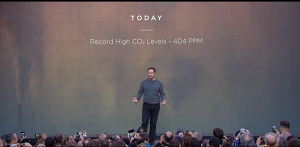 The public was quite unaware of just how much and how quickly the two companies would be sharing their "key technologies". In Hollywood, on Friday, the 28th of October, Elon Musk (CEO of Tesla) delivered a speech in front of the old set of the hit show Desperate Housewives. Odd? Yes. Journalists walked amongst a collection of seemingly normal houses on a seemingly normal street. What they weren't ready for, was for Musk to tell them that all of the roofs were retrofitted with solar panels. Not just one or two solar panels. Every tile was a solar panel.
The public was quite unaware of just how much and how quickly the two companies would be sharing their "key technologies". In Hollywood, on Friday, the 28th of October, Elon Musk (CEO of Tesla) delivered a speech in front of the old set of the hit show Desperate Housewives. Odd? Yes. Journalists walked amongst a collection of seemingly normal houses on a seemingly normal street. What they weren't ready for, was for Musk to tell them that all of the roofs were retrofitted with solar panels. Not just one or two solar panels. Every tile was a solar panel.
In a response to rising CO2 levels, Musk has made it part of his life mission to make sustainable, renewable energy technologies that would be less harmful to the planet. NASA has published a report that said that 2016 would be the hottest year on record. Musk - and by association, Tesla - are hoping to make solar panels (disguised as roof tiles) and home-powering batteries as alluring as their electric vehicles have become. Musk believes that people need to do as much as they can to work towards a world powered by sustainable energy.
"The goal is to have solar roofs that look better than a normal roof, that generate electricity, last longer, have better insulation, and actually have an installed cost that is less than a normal roof plus the cost of electricity. Why would you buy anything else?" Musk said.
The tiles are made of a super-durable glass that allows light to penetrate the cell that generates energy when shone upon by the sun. When viewed at a front-facing angle, the tiles seem to resemble normal roof tiles you would find on any roof you see today, however, when you tilt them slightly they become more transparent, and you're able to actually see the solar cell.
 The tiles come in four different designs: Tuscan Glass Tile, Slate Glass Tile, Textured Glass Tile and, Smooth Glass Tile.
The tiles come in four different designs: Tuscan Glass Tile, Slate Glass Tile, Textured Glass Tile and, Smooth Glass Tile.
The tiles are hydrographically printed so that the different texture styles can be achieved. The glass Tesla is using is much more durable than conventional roof tiles.
The new Powerwall 2.0 will be powered by the Solar Roof. Customers will then be able to use the charged battery during dusk and dawn hours to minimize the amount of utility-provided grid-energy. The Powerwall 2 has twice as much energy as the first iteration. It will cost $5,500. The Powerwall powers lights, sockets, the refrigerator, and bedrooms of an average 4 bedroom house. Musk says with the Solar Roof installed, you would be able to power a house indefinitely. The company is also releasing the Powerpack 2 that will integrate with international power grids.
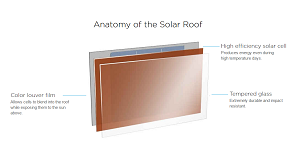 Will utilities go out of business once everyone is powering their houses with Solar Roofs and Powerwalls? Musk doesn't think so - he seems to think the "future is bright" for both the consumer and the utility.
Will utilities go out of business once everyone is powering their houses with Solar Roofs and Powerwalls? Musk doesn't think so - he seems to think the "future is bright" for both the consumer and the utility.
"The solution is both local power generation and utility power generation. It's not one or the other. Sometimes the Solar Roof is positioned as a competitor to utilities, but, we're actually going to need utility power to increase and we're going to need local power generation," Musk said.
The announcement of the shingles sent Australian hearts aflutter. Some Australian households have already been enjoying the benefits of the first Powerwall thanks to pilot programs that saw households receiving Powerwalls to test the feasibility of solar microgrids. Now with added capabilities, grid-independency is within reach for some households once the Powerwall 2 starts shipping in January 2017.
Australia aims to achieve 100% renewable energy by 2020.
- Details
- Written by: Quintus Potgieter
- Category: Industry
The first worker to die of a "work-related" incident at one of Qatar's World Cup 2022 stadiums, has been mourned by the organizers of the tournament. The worker was reportedly hit by a water truck at the Al Wakrah stadium and has become the first person to die whilst physically working at a Qatari stadium. "It is with deep regret we announce a work-related fatality on one of our projects. A full investigation is underway to determine the factors which contributed to the death of one of our workers," The Supreme Committee for Delivery and Legacy said on their website. Three workers had previously died at World Cup construction sites in what organizers claimed were non-work-related circumstances.
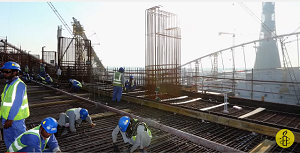 One of the non-work-related incidents involved a 52-year-old painter who died working on the main stadium, the Khalifa International Stadium. The organizers say he died of cardiac arrest in one of the site's dining halls a year ago.
One of the non-work-related incidents involved a 52-year-old painter who died working on the main stadium, the Khalifa International Stadium. The organizers say he died of cardiac arrest in one of the site's dining halls a year ago.
Qatar has been under constant scrutiny for the labor conditions the workers have had put up with since construction on the 2022 venues began. Ninety-four percent of the workforce involved in the construction of World Cup venues are of South Asian background ; Pakistanis, Bangladeshis. Indians and Nepalese people. There are 1.4 million migrant workers in the country. The country was criticized by the International Trade Union Confederation in 2013 who reported that 1,239 deaths had occurred from 2011 to 2013 in Qatar. They also said that 4,000 migrant workers would die before a ball is kicked off in 2022, irrespective of whether they work on World Cup venues or not. It is in their, and other groups like Amnesty International's opinion that a World Cup should not take place in a country where worker deaths happen at an unprecedented level.
 "FIFA has not done enough to address the situation from the very beginning. It should have known even before it awarded the World Cup to Qatar, that this is an environment where labor abuse is endemic. In its bidding process, it made no mention of human rights, let alone labor rights," said Mustafa Qadri, a researcher for Amnesty International.
"FIFA has not done enough to address the situation from the very beginning. It should have known even before it awarded the World Cup to Qatar, that this is an environment where labor abuse is endemic. In its bidding process, it made no mention of human rights, let alone labor rights," said Mustafa Qadri, a researcher for Amnesty International.
Qatar's World Cup will bring engineering jobs to the country in industries including transport - a new railway system is planned - new hotels and of course, the new stadiums. They are also planning to install state-of-the-art air conditioning in the stadiums.
However, Amnesty International say the workers' situation has not improved since it was exposed in 2013/14. One of the workers, speaking anonymously to the NGO said: "I am an electrician, and I agreed to electrician's work. But when I came to Qatar, they only gave me electrician work for the first two months. After that, they said I had to do iron fitting work."
Engineering Innovation
 Engineers at Qatar University have been utilizing rapid prototyping technology to 3D print models of the stadiums. They will use these models in weather simulation tests in their labs to test their resilience to sand storms that might flare up during the World Cup. Regardless of their hosting in winter, the stadiums will be used in summer as well, and that is when most sand storms occur.
Engineers at Qatar University have been utilizing rapid prototyping technology to 3D print models of the stadiums. They will use these models in weather simulation tests in their labs to test their resilience to sand storms that might flare up during the World Cup. Regardless of their hosting in winter, the stadiums will be used in summer as well, and that is when most sand storms occur.
They will test the model by putting it in a wind tunnel and letting the wind run over it, testing both for weather and inside-stadium temperature. Qatar University Professor Dr. Saud Abdul Aziz Abdu Ghani, talking to Doha News, said: "We can see the temperature per tier, add in variants as sweat produced and amount of spectators, and then run simulation and see the effect on the temperature inside the stadium. For the cooling, we want a minimal amount of air to go in, and we want the air inside to stay there. We can change the direction and stimulate different directions at this facility."
According to the engineers, the aerodynamic testing and modifications have led to good results. One of the stadiums, after aerodynamic model testing, revealed that it didn't need as much steel as the designers initially thought.
The engineers lauded aerodynamics testing and said it is the future of building design.
- Details
- Written by: Evangeline Newby
- Category: Industry
The National Aeronautics and Space Administration of the United States (NASA) has said that after 136 years of global temperature record keeping, 2016 is irrefutably the hottest year on record. The revelations come after September’s data showed that the month was the warmest month in history, according to NASA’s Goddard Institute for Space Studies (GISS). They reported that September was 0.91 degrees celsius warmer than the mean September temperatures from 1951 to 1980. The warmer global temperatures have already caused long-lasting droughts in the United States, South Africa, India, and Australia.
It all started in 2015 with the El Niño climate cycle. Coupled with the global climate change phenomenon, air temperatures were altered and a drought ensued, which led to less rain and thus less water. It has caused one of the worst droughts South Africa has seen in 30 years. In India, 134 farmers have committed suicide in just two months due to a two-year drought that has led to crop loss. In South Africa, several provinces have had water shortages. The provincial governments have ordered water restrictions be put in place at the utilities and cautioned citizens to use water sparingly or face the consequences. The consequences being...complete water cut-offs.
Even with the El Niño’s natural regression, the realities of climate change have been apparent. The immediate issue is the lack of water. Engineers are hard at work to figure out how to bring technology to the drought-fight at the University of California, Los Angeles (UCLA). At a third-party moderated discussion, Madelyn Glickfeld, a member of the UCLA Water Group and Institute of the Environment of Sustainability said: “The technologies that are most promising are smart technologies - technologies that use smart sensors to help people know how much water they’re using. This helps change behavior.” A recent poll by a Californian company named Xylem revealed that 76 percent of people believe that recycled water is the step forward for the region’s water infrastructure.
In response, Eric Hoek, a civil engineering professor at UCLA said: “I can take any quantity of water and turn into any other quality of water. The technology is there. It has been there for 20 years. The question is how much you’re willing to pay. Reusing water should be completely uncontroversial. The reality is it’s much safer to intelligently implement technology than to put water back out into the environment and pray that nature magically cleans it up.”
Hoek is talking about toilet to tap technology and reservoirs that capture rainfall runoff which, in turn, runs the water through a water purification process and eventually produces drinkable and reusable water. These are inventions that engineers have been successfully implementing in several countries for many years. However, Californians are unfamiliar with Direct Potable Reuse (DPR)/the toilet to tap wastewater reuse method. This system could lead to more water being accessible in the drought-stricken state.
However, drinking water aside, the other issue countries will have with further drought climate conditions is in the hydroelectric power plants. In Daniel L. Calzi’s book Dams, Drought and Energy-water Interdependencies, he details how droughts have the potential to affect “the operation of dams in ways that can be detrimental to hydropower production.” Less hydroelectric electricity being produced means higher electricity costs for utilities and customers. This is specifically bad for the United States.
The country’s hydroelectric facilities generated 51% of the renewable energy in the U.S. in 2013, and continue to play a large role to this day. Calzi points out that hydroelectric plants are the least expensive source of electricity and produce no fossil fuels. The only issue is that the facilities rely on precipitation to continue running, which feeds the local water sources. Engineers also have to consider humidity, wind patterns and reservoir dynamics, which in a drought, is nothing less than difficult. Annoyingly, if there is too much water - in the event of a flood, or a related event - hydroelectric plants also stop working.
In an attempt to remedy the water scarcity crisis that is becoming prevalent in the world, Sir James Dyson the industrial designer, is encouraging engineers to lend their expertise to saving water. Speaking of the situation in his own country, Dyson said: “Parts of the country are waterlogged, while in others it’s illegal to use a hosepipe.” He says that the United Kingdom still relies on “antique infrastructure” handed down to them from the Victorian era. He says it is time for the latest generation of engineers to redesign the water system and improve it.
“It is politicians who should be leading this charge. They must think big, think long-term and they must reinforce the value and importance of great engineering,” Dyson said. Engineers in the UK have ensured that leaking pipes are replaced, Dyson adds, however, he says new technologies could be introduced that improve these water infrastructure processes.
Engineers have a plethora of options when entering water industries. A Professional Certificate of Competency in Programmable Logic Controllers & SCADA Systems could see you tackling the digital side of controlling a water utility that relies on automated processes to keep it functioning. You could get your certificate in Structural Design for Non-Structural Engineers and see how water and wastewater infrastructure is built. You could also pursue a certificate in Onshore and Offshore Pipeline Systems - the water has to be transported somewhere. And much more.
Contact us at the Engineering Institute of Technology today to enquire about which course would be right for you: http://www.eit.edu.au/course-enquiry
References:
Calzi, Daniel L. Dams, Drought and Energy-water Interdependencies. Print.
- Details
- Written by: Quintus Potgieter
- Category: Industry
Steve Mackay, Dean of Engineering at EIT and sister company, IDC Technologies enjoys writing his weekly blog including useful tips and current industry matters for his fellow engineering colleagues. With a loyal and expanding following base reaching over 600,000 people around the world, click here to read all of Steve's blogs over at EIT's sister company, IDC Technologies.
Digitally Hunting for an Engineering or Technology Job
Have you experienced the frustration and futility of searching and applying online for hundreds of jobs – particularly in the engineering and technology space? Perhaps, you feel that you are casting your resume into the abyss whenever you apply online.
Unhappily today, you often have to get your resume past an army of robots looking for keywords before handing over a select few resumes to a human recruiter to look at. Some firms are even proactively scanning the web looking for personnel with the perfect characteristics matching a particular job profile. Other strategies are to require you to upload a video to the web with you answering specific questions.
This is all making it extraordinarily difficult for you to actually talk to a human. And it makes it critical for you to follow the right steps in dealing with this plethora of technology so that you can gain an interview.
Predictably the first step is simple
This is for you to review the job description and ensure your resume is aligned with what the recruiter requires in terms of experience and qualifications in a measurable way.
This is to make it easy even for an orang utan to see that you are the perfect match for the job. This doesn’t mean that you must lie but you must put effort in to visualise what the job requires and align your resume with the job. Ensure that you use the relevant key words so that they get picked up by the robots doing the initial scan of resumes. Perhaps put in the acronyms relating to the hardware or software requirements.
Stay up-to-date at all times
Keep everything relating to your online career up to date. This means not only your resume but LinkedIn profile and other social media sites.
Smile for the Camera
Many interviews are conducted online and through Skype. Ensure you are 100% presentable and prepared for any interview. Whether it is demonstration of your sales or technical skills or simply as an interview.
Assess your Performance and Consider Alternative Strategies
If despite all this work; you are still hitting the black hole in terms of results – sit down and consider what you are doing. Get a colleague to assess your resume or presentation and make suggestions. Consider that you may be applying for jobs in an overtraded area where demand is low and supply huge.
Perhaps you should be using other strategies to gain your dream job in engineering – such as gaining more credentials or experience or joining an online discussion group in the topic area. Actively networking with others in the industry is a strategy which engineers tend to be less enthused with but which can work wonders for a job search.
Above all – persist and don’t give up. Ultimately your grit and determination will prevail in your job search.
Yours in engineering learning
Steve
Mackay’s Musings – 16th August’16 #613
780, 293 readers – www.eit.edu.au/cms/news/blog-steve-mackay
- Details
- Written by: Quintus Potgieter
- Category: Developments
General Electric is considered to be one of the world's leading industrial companies, who have played a leading role in building energy infrastructure. They do this through their Power department, formally known as GE Power. They are one of the world leaders in power generation and water technologies, supplying utilities around the world. With the recent advancement of renewable energy technology, the company has made a big investment into what they think would further the renewable energy mandate in the world of today.
 Yesterday, General Electric announced that they would be purchasing LM Wind Power, a company based in Denmark who manufacture and supply rotor blades to the wind industry. GE would be purchasing the company for a sum of $1.65 billion. A GE spokesperson said: "LM Wind Power has a terrific team, with a strong passion for their mission to power a cleaner world. Their values of customer focus, teamwork, trust, and ownership are harmonious with our own values. [GE] is very optimistic that together we will help shape the future of energy."
Yesterday, General Electric announced that they would be purchasing LM Wind Power, a company based in Denmark who manufacture and supply rotor blades to the wind industry. GE would be purchasing the company for a sum of $1.65 billion. A GE spokesperson said: "LM Wind Power has a terrific team, with a strong passion for their mission to power a cleaner world. Their values of customer focus, teamwork, trust, and ownership are harmonious with our own values. [GE] is very optimistic that together we will help shape the future of energy."
The figures speak for themselves. According to Business Wire, in 2015, 50% of new electricity infrastructure was made up of renewable energy sources, with wind accounting for 35% of those additions. GE has said that buying the blade manufacturer will catapult them into a habit of in-house blade design and manufacturing that will compliment their renewable energy business. In another report by Markets and Markets, solar and wind renewable energy technologies accounted for 77% of the amount of renewable energy produced in the United States last year.
Jérôme Pécresse, chief executive of GE Renewable Energy told Wall Street Journal: "We'll be more local, have more flexibility and knowledge in turbine design and supply, and more ability to innovate and reduce product costs while improving turbine performance." LM Wind Power currently has 13 factories spread across 8 countries including Denmark, Spain, Poland, Canada, USA, India, China and Brazil. So, the purchasing of the company will put GE in a good position for being a leading supplier of wind turbine blade technology.
Innovative wind turbine technologies
In a video below, you can see a company known as Icewind, who are engineering novel wind turbines according to a design named the 'Savonius vertical axis' wind turbine. These are turbines that can spin for hours with minimal wind and generate electricity. Apparently, the design of Icewind's turbines ensures that the turbines cannot spin at speeds too fast for the turbine to handle. Conventional wind turbines sometimes pick up too much speed and break the turbines.
- Details
- Written by: Steve Mackay
- Category: Blog - Steve Mackay
Seemingly, the word is out that millennials (born from 1980 to 1996) are gaining a reputation for job-hopping. According to a recent Gallup report, 21% of millennials changed jobs in the past year. This is a huge number and considerably more than for older generations. Apparently the belief is that this rapid move in jobs can boost one’s career with greater salaries and more learning possible with this strategy.
Dear Colleagues
 Seemingly, the word is out that millennials (born from 1980 to 1996) are gaining a reputation for job-hopping. According to a recent Gallup report, 21% of millennials changed jobs in the past year. This is a huge number and considerably more than for older generations.
Seemingly, the word is out that millennials (born from 1980 to 1996) are gaining a reputation for job-hopping. According to a recent Gallup report, 21% of millennials changed jobs in the past year. This is a huge number and considerably more than for older generations.
Apparently the belief is that this rapid move in jobs can boost one’s career with greater salaries and more learning possible with this strategy. Perhaps, in working for a short time with a start-up , for example, you can hit the mother lode with a big payout when the company is bought or listed on the stock exchange.
Supporting this argument for rapid job movement is a survey from Payscale which found a ferocious turnover with tech companies such as Amazon and Alphabet (owner of Google) with a workforce median tenure of slightly more than one year. Quite unbelievable. The amount of change in these companies would be incredible requiring a totally different approach to running the business.
With all the restructuring and downsizing (or rightsizing as the economists may refer to it) going on in industry, the move from job to job seems quite believable. And many senior managers have seen the booms and busts before and are probably sympathetic to someone who hasn’t been long with a company.
It’s all a Myth
Most assuredly, however even today, if you walk into a hiring manager’s office and tell her that you have been through three jobs in three years, you won’t exactly enhance your odds of getting the position. So, job hopping isn’t a good idea or an easy story to tell a would-be employer. So if you have been through a flurry of jobs – you better have a good story to tell the hiring manager.
For example, it is quite understandable if you worked for a company that went bust (e.g. a start up) or you worked as an intern for a year to get experience in a particular technology. Or you set up your own business which didn’t work out. Or you worked on a series of projects as a contractor.
The Unmentionables
However, if you start mentioning reasons for moving quickly from company to company which included such items that you had a loser for a boss or couldn’t handle the company’s culture or similar explanations – you are probably not going to be giving a good story to get you that job you are after.
There has been a change of Philosophy
There is no doubt that only 20 years ago; jobs were hugely stable and engineering professionals often stayed for whole careers with one company. However, the last decade or two has seen company restructurings and failures reach epidemic proportions. Aided and abetted by the massive technology change going on.
So managers today are more sympathetic to job hopping but nonetheless you still need to have a carefully rehearsed story if you have been through a plethora of jobs in a few years. Good luck.
Thanks to an interesting article by Dawn Kawamoto of the IEEE for some of the references above.
Yours in engineering learning
Steve
Mackay’s Musings – 11th Oct’16 #621
780, 293 readers – www.eit.edu.au/cms/news/blog-steve-mackay
- Details
- Written by: Quintus Potgieter
- Category: Developments
- Details
- Written by: Steve Mackay
- Category: Blog - Steve Mackay
I had a chuckle when I saw my old colleague (and sparring partner), Michael Brown, recently noting that process dead time is one of the most misunderstood issues in feedback control loops. Absolutely true - there is so much gibberish spoken about this topic. No matter what discipline of engineering you are in – you would have come across the problem of dead time.
Dear Colleagues
 I had a chuckle when I saw my old colleague (and sparring partner), Michael Brown, recently noting that process dead time is one of the most misunderstood issues in feedback control loops. Absolutely true - there is so much gibberish spoken about this topic. No matter what discipline of engineering you are in – you would have come across the problem of dead time.
I had a chuckle when I saw my old colleague (and sparring partner), Michael Brown, recently noting that process dead time is one of the most misunderstood issues in feedback control loops. Absolutely true - there is so much gibberish spoken about this topic. No matter what discipline of engineering you are in – you would have come across the problem of dead time.
Probably even if you are a hippie (do we still have any around?) living in a commune you would also have come across the issue (as I will explain below in regards to hot water).
Some myths in process control which abound and which are strongly evident are ones such as:
- Tuning is the most critical element of a process loop and one needs to spend most time on this issue.
- Instruments always work correctly and feed the right data into the control system and we don’t need to worry too much about them. Tuning is where we need to spend all our time.
- Advanced Process Control techniques will solve all our difficult control problems.
What is Dead Time?
As a reminder - dead time is the amount of time it takes for the process variable to start changing after the output from the controller is changed (to a control valve for example).
Lag time, on the other hand, is the amount of time (after the dead time has elapsed) that the process variable takes to move 63.3% of its final value after a step change to the valve position.
Dominant Processes
A dead time dominant process occurs when the dead time is greater than the dominant lag.
An example, I always love to quote is when a feeder discharges ore onto a conveyer belt. Some distance away from where the ore hits the belt is the weighing instrument. This means that when the feeder controller makes changes to the amount of ore discharged onto the belt – there is still some significant dead time before anything happens on the weightometer (so the controller is ‘flying blind’ for a while).
Another example, is when you having a shower in an old hotel where the hot water geyser is some distance away from the shower – you will make adjustments to get the right level of hot water and find out that there is no response so you end up with significant instability as you twiddle the tap vigorously in both directions trying to get the right balance. And with the oscillatory action – you have instability.
Rules and more rules
As Mike says – the rule for dealing with dead time is simply this: The longer the dead time, the slower the tune. The trick is to set the integral term correctly and then reduce the proportional gain until the response is stable. You should be able to get to the new setpoint within two dead times.
How Does One Deal with Other Disturbances?
If there are other ongoing disturbances – well – there is nothing much you can do. Perhaps, try feedforward control or fix the main problem – move the measuring point or control action (e.g. valve) to reduce the dead time.
Myths and More Myths
The critical thing is to avoid the myth about using the derivative term to ‘speed up the response’. Totally incorrect. The core of the problem, as I understand it, is that you don’t have sufficient process data from your process to make a good quick decision with the controller. Hence the need for a slower tuning action.
If you want some solid robust process engineering stuff relating to this rather superficial summary of mine go to Mike Brown’s site (www.controlloop.co.za).
Yours in engineering learning
Steve
Mackay’s Musings – 4th Oct’16 #620
780, 293 readers – www.eit.edu.au/cms/news/blog-steve-mackay
- Details
- Written by: Quintus Potgieter
- Category: Developments
Additive manufacturing is the process of manufacturing a material object through layer-by-layer technology enabled by computer-aided design technology. Or at least it used to be. A new kind of rapid prototyping is on the rise. Rapid prototyping is a useful process for scientists and engineers alike, who use 3D printing technology to rapidly manufacture objects for both theoretical and practical uses. Rapid prototyping allows for the creation of models and parts that could be used in engineering applications. In some applications, it used to take an idea and display it as a working model or prototype. A tool for engineers to envision what the end product of something might look like, or actually manufacture a tool necessary for their projects, or even produce the product they are going to be selling.
According to T.S. Srivatsan and T.S. Sudarshan's book: Additive Manufacturing: Innovations, Advances, and Applications, rapid prototyping has achieved for big successes in the development of products:
1. Reductions in both time and costs
2. Enhanced human interaction
3. Possibility of creating any shape that would otherwise be difficult to produce
4. A shortened development cycle
However, the technology has progressed to the point where rapid prototyping could forever be changed. In 2015, Michael Breme, the head of Audi's tool design, described how 3D printing was benefitting their business. He said: "It enables us to produce the parts faster
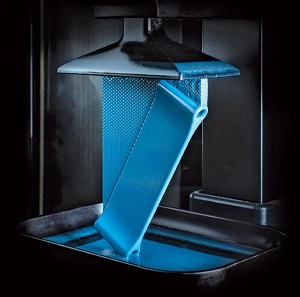
and more cost-effectively. For example, with a 3D printer, we don't have any waste like we would with metal cutting, which means we're faster and more effective." However, back in 2015, there was only one problem with 3D printers. They weren't fast.
The 3D printing start-up company, Carbon, has received $81 million in funding from global investors this year. The investors include BMW Group, General Electric, Nikon and JSR Corp, amongst others. The company now has $222 million in funding that it will use to further their particular kind of 3D printing. The company utilizes Continuous Liquid Interface Production (CLIP). Their printer, the Carbon M1 printer produces a solid object from a small tub of liquid plastic through new stereolithography (SLA) rapid prototyping technology. They're making rapid prototyping even more rapid.
How do they do it?
Well, what this printer does differently to other printers is all in the ultraviolet (UV) light projector. The projector purportedly 'projects' what the end product should look like and then pulls it out of the liquid polymer (resin). Instead of a laser physically redefining the CAD (computer-aided design) pattern over and over again, the CLIP technology uses UV light and oxygen to produce a mechanically sound object without the need for layer-by-layer technology. As a result, a chemical process known as photopolymerization occurs.
The CEO of Carbon, Joseph DeSimone, said: "This product lays the groundwork for addressing major gaps in additive manufacturing as we work with our customers to continually innovate and push the boundaries of product design and production."
Carbon says their method of rapid prototyping is one hundred times faster than conventional printers available on the market today.
Speaking of the 3D printing market. The rapid prototyping materials (the actual resins used to print) market is expected to grow at a compound annual growth rate of 26.8% from 2016 to 2021. Markets and Markets estimate that the rapid prototyping materials market will reach USD 903.8 million by 2021. According to another report by Wohlers Associates, the entire 3D printing market will peak at $10 billion by 2017. They also confirmed that last year, 278,000 desktop 3D printers were purchased, showing that 3D printing is also becoming popular among hobbyists.
- Details
- Written by: master-engineering-and-bachelor-science-degrees
- Category: Announcements
Applications Now Open!
EIT is pleased to announce that we are now accepting applications to join the January 2017 intakes of each of the Master of Engineering Degrees:
- Master of Engineering (Industrial Automation)
- Master of Engineering (Electrical Systems)
- Master of Engineering (Safety, Risk and Reliability)
If you hold a Bachelor Degree, you can apply for a place on one of these two-year part-time (100% online) study programs - accelerate your career into high gear.
Due to the demand for the limited places on these degrees, you should act now; our window for accepting applications will be short.
You can obtain fees, payment options and copies of the application forms by completing the course enquiry form here: www.eit.edu.au/course-enquiry.
The live, online method of teaching will ensure that engineers and graduate technologists can begin the two year programs wherever they are in the world. Furthermore, the qualification is attained part time, allowing students to study alongside work and family commitments.
The EIT interactive platform of learning provides students with two vital benefits. The first is the option, during every live session, to question their lecturers. The second is the ability to form networks within the virtual classroom with other master students based around the world.
Give your career and your self-esteem a massive boost. Contact us today.
Bachelor of Science (BSc) Degrees
We are also delighted that the Bachelor of Science (BSc) degrees have been accredited by TEQSA, Australia’s regulatory authority. These BSc degree programs fit in seamlessly to EIT’s other program offerings allowing you to progress from a post school certificate (e.g. trades certificate) to 18-24 month Advanced Diploma, 3-4 year BSc, culminating in a 2 year Master of Engineering degree.
FREE Information Session
If you are interested to know more about the BSc and Master programs, attend our live, online information session with EIT's Dean of Engineering, Dr Steve Mackay. For full details and to register your place, please click here.
Applications are now open for the January 03, 2017 intakes for the following degrees:
- Bachelor of Science (Industrial Automation Engineering)
- Bachelor of Science (Electrical Engineering)
- Bachelor of Science (Mechanical Engineering)
- Bachelor of Science (Civil and Structural Engineering)
One of the concerns that students may have is: "Will I be able to finish the program?”. Yes you will! You will receive full support from the lecturers and your Learning Support Officer and mentor; we want you to complete the degree, as much as you do. The dedicated learning coordinators and knowledgeable lecturers will all focus on providing you with the know-how to help you through the degree program, which will benefit you throughout your engineering career.
You are assuredly getting the most effective online education available. Our highly interactive sessions with experienced passionate engineering lecturers, supported by keenly interested learning coordinators for each class, is a key to our ongoing success and industry high graduation rates. We believe this is by far the best way to achieve outstanding results in your engineering education.
Read more on our Bachelor of Science programs here.
Applications will close December 16, 2016.
Do not miss out on a place – APPLY NOW!
- Details
- Written by: Steve Mackay
- Category: Blog - Steve Mackay
Murphy’s Law is especially quoted in engineering and as most of you would well know says: “If anything can go wrong, it will”. Often, we add: “and at the worst possible time, in the worst possible way”.
Origin of Murphy’s Law
The Law’s (supposed) origin was in engineering where Captain Ed Murphy, an engineer at Edwards Air Force Base, was dealing with a technician who incorrectly wired a strain gauge bridge...
Dear Colleagues
Murphy’s Law is especially quoted in engineering and as most of you would well know says: “If anything can go wrong, it will”. Often, we add: “and at the worst possible time, in the worst possible way”.
Origin of Murphy’s Law
The Law’s (supposed) origin was in engineering where Captain Ed Murphy, an engineer at Edwards Air Force Base, was dealing with a technician who incorrectly wired a strain gauge bridge (wired backwards) for doing gravity tests which as a result gave a (totally wrong) zero reading. There is vigorous debate about whether the engineer gave the incorrect wiring diagram to the technician or whether it was just mistakenly wired up. Whatever happened, the law is now firmly linked with Captain Murphy. And the set-up should have been meticulously tested before being put into service (which it wasn’t).
Uncertainty Principle
I reckon this is a reflection of a fundamental principle of engineering about the lack of precision which results in measurement uncertainty. We can never know precisely the value of anything to any arbitrary level of precision. At the sub-atomic level, Heisenberg’s principle makes this point, that for example that the more precisely you try and measure the location of a particle, the less precisely you will measure its momentum (and vice versa for trying to measure momentum precisely). This doesn’t reflect on your ability to measure, but on the nature of the system itself.
Risk Analyses
In Safety engineering, we do what is called a risk analysis where we identify what types of harm could arise from what we are planning to make or do. We can then establish the probability of the occurrence and then multiply this by the severity of the harm (broken finger, to amputated arm) and we end up with the Risk. If the Risk is great enough, we can then apply a $ value to it and determine how much time and money to spend in reducing it to a tolerable risk. It is impossible to make anything totally unequivocally safe. So as far as Murphy’s Law and risk management is concerned, if you have conducted your risk assessment correctly, then you must expect that the consequences it predicts will eventually come to pass.
And remember: “Absence of proof is not proof of absence”. For example, many years ago with the ill- fated space shuttle launch, a proper risk analysis would presumably have shown that the foam chunks falling off its booster and damaging its thermal tiles would have correctly predicted the deaths and destruction of the craft during re-entry due to the defective tiles. However, NASA believed that because they had not seen such problems so far, they would continue not to see them.
So please continue to embed awareness of Murphy’s Law into your daily engineering life and constantly seek to minimise the consequences of risk.
With our constant litany of woe with IT stuff, I think we are all familiar with Murphy’s Computer Laws (Finagles Rules) – well, I certainly am:
What Every Computer Consultant Needs to Know:
- In case of doubt, make it sound convincing.
- Do not believe in miracles. Rely on them.
Thanks to Keith Armstrong for his illuminating article
Yours in engineering learning
Steve
Mackay’s Musings – 27th Sept’16 #619
780, 293 readers – www.eit.edu.au/cms/news/blog-steve-mackay

- Details
- Written by: Steve Mackay
- Category: Blog - Steve Mackay
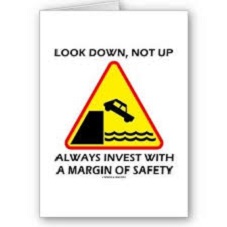 In the past few years; we have seen some spectacular collapses of buildings and bridges. This is quite inexplicable to today’s structural designer and engineer who puts enormous effort into the careful use of materials and huge safety margins.
In the past few years; we have seen some spectacular collapses of buildings and bridges. This is quite inexplicable to today’s structural designer and engineer who puts enormous effort into the careful use of materials and huge safety margins.
However, when a designer is operating at the limit of their expertise; mistakes still occur...
Dear Colleagues
In the past few years; we have seen some spectacular collapses of buildings and bridges. This is quite inexplicable to today’s structural designer and engineer who puts enormous effort into the careful use of materials and huge safety margins.
However, when a designer is operating at the limit of their expertise; mistakes still occur. One of the questions with the Deepwater Horizon oil rig which exploded with massive damage was in the use of cement (coupled with nitrogen gas) a few kms under the seabed – as to whether it did indeed have the strength required to prevent a massive gas and oil surge. As we know, cement as a proven structural material has been around since Roman times – but for perhaps more predictable environments.
The typical approach a structural engineer follows when assessing materials for safe use and which would give some background to the building you live in, is as follows.
Lab Testing
All materials used are extensively lab tested to determine their structural properties such as tension and compression under loading. The design strength actually used is considerably lower than these figures.
Design Strength Varies Depending on Materials
The calculation of design strength varies from concrete and steel which are fairly predictable and of uniform quality to wood which is rather varied. Wood is considerably more variable in strength as it could have an unusual number of knots or come from a diseased tree. Thus the safety margin has to be considerably higher.
For example, the Douglas fir, has a safety margin of 5.5 (versus 1.4 for Steel). For example, Douglas fir has a compression maximum strength of 51 MPa (7430 psi) and based on the safety margin of 5.5; a design strength of 9.3MPa (1350 psi).
However, (as we know from the Twin Towers disaster) steel can have problems for structural support. As you may recall it is weak in fires and must be protected in all buildings.
Additional Safety Margins
Structural engineers build in additional safety margins by overestimating the dead and live loads and selecting supports one size up from what the design suggests.
Beware when you are at the Limits of Technology
However, despite all this care; you have to be careful about operating at the limits of technology and as to whether you will see sudden loads well in excess of what you designed (DeepWater Horizon) or indeed, your materials exposed to conditions they were never designed for (Twin Towers).
Thanks to 101 Things I learned in Engineering School by John Kuprenas with Matthew Frederick.
Andrew Heller makes an interesting point: Technology is like a fish. The longer it stays on the shelf, the less desirable it becomes.
Yours in engineering learning
Steve
Mackay’s Musings – 20th Sept’16 #618
780, 293 readers – www.eit.edu.au/cms/news/blog-steve-mackay
- Details
- Written by: Quintus Potgieter
- Category: Developments
Engineers in North Dakota, in the United States, are embroiled in a stop-start construction build of what would be the Dakota Access Pipeline. Due to citizen pressures in the form of protesting, the project has been halted by the U.S. Court of Appeals for the District of Columbia Circuit. Meaning, that a federal court under the Obama administration has stopped the pipeline progressing, for now. Obama previously completely canceled a pipeline that was meant to run from Canada to Texas, named the Keystone XL Pipeline.
The engineers in North Dakota are from a company named Dakota Access, who are made up of Energy Transfer Partners. They have been assembling the pipeline that is to span four states wide. It will reportedly cost $3.8 billion and will transport 470,000 barrels of "light sweet crude oil" from North Dakota, all the way to Patoka, Illinois, twenty-four hours a day.
The engineers say the project will create 8,000 to 12,000 new local jobs during construction. They also

say that the pipeline will lead to millions "in state and local revenues" for the states it spans across. There's just one problem, however. The proposed pipeline reportedly cuts through land sacred to the Lakȟóta people ; indigenous peoples of the Great Plains of North America. The Rock Sioux Tribe also expressed concerns that it could impact the drinking water in the nearby areas where they are stationed.
The engineers have also tried to assure the public that a pipeline is the safest way to transport crude oil. However, the tribes and the local protestors are concerned about hypothetical leaks or accidents that might befall the pipeline, leading to oil spills. In the past, oil would be transported by rail, which led to fiery derailments.
The BBC confirms that the protests linked to the North Dakota pipeline have brought together the largest Native American gathering in 100 years. Dave Archambault II from the Standing Rock Sioux Tribe, who are protesting against the pipeline said: "It is a pipeline that is threatening the lives of people, lives of my tribe as well as millions down the river. It threatens the ancestral sites that are  significant to our tribe."
significant to our tribe."
The Energy Transfer Partners are not backing down. They say they are committed to completing the pipeline's construction and are imploring the Obama administration to lift their moratorium so that they can continue building the Dakota Access Pipeline.
One thing the engineers are right about is how important pipelines have been to American energy production. On their website, Dakota Access write: "Pipelines play a vital role in our daily lives and provide critical links between the sources of energy in production fields and end-users or consumers. Without pipelines, the majority of the United States would not have access to American oil and natural gas..."
However, the continued fight to cut fossil-fuel emissions, around the world, has meant that pipeline systems in oil and natural gas have seen some criticism. Whether or not the Dakota Access Pipeline's construction will continue remains to be seen.
- Details
- Written by: Quintus Potgieter
- Category: Industry
- Details
- Written by: Quintus Potgieter
- Category: Industry
An engineer from the automaker Volkswagen has spilled the beans. James Robert Liang (62) has pleaded guilty to the very first criminal charges in the '#Dieselgate' scandal. Liang reportedly agreed to a plea deal for charges handed down by U.S. prosecutors. The prosecutors said Liang admitted to being a part of a "nearly decade-long conspiracy to defraud US regulators and VW customers." He also pleaded guilty to the violation of the Clean Air Act.
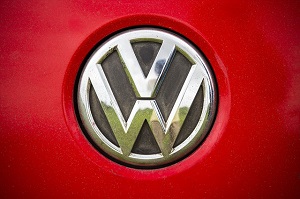 Where did it all start?
Where did it all start?
According to the Telegraph, Liang, an American himself, worked at VW's Wolfsburg branch from 1983 to May 2008. Then he moved back to America to a U.S. branch to work on "environmentally-friendly clean" diesel vehicles in 2006. Liang admitted that it all started in 2006 when the team of engineers was unable to get their diesel engines to emissions standards. As a result, they decided to develop "engine management software" that would underreport the vehicles' emissions.
"I knew that Volkswagen did not disclose the defeat device to U.S. regulators," Liang said. He is allegedly assisting the government in their investigation and will be instrumental in the prosecution of other engineers involved with the emissions scandal.
The investigations by the U.S. Justice Department uncovered that the Jetta and the Golf models between 2009 and 2015 were the cars that sprung the 2006 plan to underreport emissions, into action.
Earlier in June, it was confirmed that Volkswagen AG was looking at a hefty penalty for its emissions untruths to the tune of $14.7 billion. Liang's confession also happened in June but was only mentioned in media publications this month.
When the emissions-control module was discovered, Yotam Lurie, a business lecturer of business ethics at Ben-Gurion University in Israel, spoke to Spectrum, saying: "This is shocking. It's shocking that the software engineerings of Volkswagen overlooked and neglected their fiduciary responsibility as professionals. Professionals who have a semi-regulatory responsibility within the organization to ensure safety, in this case, environmental safety, even when this is less efficient or economical." (via Spectrum)
The Dean of the Engineering Institute of Technology Steve Mackay, says it best when talking about engineers and the ethics they should consider. Earlier this year in a series of engineering news updates, the Dean said: "Ethics for engineers, means engineers in the fulfillment of their professional duties shall uphold paramount the safety, health, and welfare of their fellow citizens. That should be the highest possible consideration. It's a very expensive process if you want to rip the system but ethics is something we as engineers and technical professionals have to do all the time."
- Details
- Written by: Quintus Potgieter
- Category: Industry
Lithium-ion batteries are back in the spotlight this week. Samsung's brand new flagship smartphone, the Galaxy Note 7, is undergoing a global recall that is estimated to cost the company $1 billion. The President of Samsung's mobile business department Dongjin Koh told reporters that there was a "tiny problem in the manufacturing process" that caused the phones' batteries to catch fire. In a YouTube video posted by a man named Ariel Gonzalez, the damage the battery fire causes to the phone can be seen:
The video shows only one of the 35 known cases of ill-manufactured batteries in the Note 7 series. No injuries as a result of the Galaxy Note 7 battery fires have been reported.
However, according to ClassAction.com, three months before the Galaxy Note 7 recall, a Galaxy S7 Edge caught fire in the pocket of a construction worker in Ohio. The man in question has now filed a product liability lawsuit against Samsung for the third-degree burns he suffered due to the phone catching fire.
Samsung is now asking the media to be patient as they fully investigate the battery flaws. The official answer given to media and the public right now is the aforementioned "battery manufacturing flaw".

Nonetheless, media speculations have already pointed the finger at "thermal runaway". Previously, a rare condition for lithium-ion batteries, thermal runaway has been reported in several industries that utilize lithium batteries. What happens is, a battery gets overheated to the point where the heat reaches temperatures it can no longer contain. Once the battery gets hotter at a faster rate than it, itself, can produce and absorb heat, a fire or explosion is sometimes likely. Lithium-ion batteries are used in smartphones, laptops, pacemakers, watches, e-cigarettes, and cars. The most alarming case of thermal runaway was reported in September of 2013 when the lithium batteries inside a Boeing 747 caught fire. Qantas, Jetstar, and Virgin Australia (along with a cautionary word from the Federal Aviation Authority) have ordered Galaxy Note 7 owners to switch their phones off inside their aircraft. Not only are aircraft at risk, so are cars. A family's Jeep was destroyed after the phone exploded inside the vehicle, leading to a much larger fire. The family confirmed that the phone was charging in the center console of the Jeep when the  fire occurred.
fire occurred.
Donald Finegan, a chemical engineer at the University of College London explains what happens to phones that suffer from thermal runaway when charging. He said: "The battery can continue to charge and can become even more unstable and eventually just burst into flames itself, without any kind of external heating. The snowball effect happens so fast that, within a second, the entire cell goes from being intact to being completely destroyed."
The new Note 7's with the battery flaw being fixed will start shipping on September 19th. How will you know you're getting one with the new battery? Samsung says that they will be putting a sticker with a blue 'S' on the box, which will clearly identify the fixed range of smartphones. They will also launch an online service where customers can insert their IMEI numbers and check whether or not their phone is pre-recall or post-recall. The service will cross-check a database of IMEI numbers and inform a user whether or not they are using a phone that needs to be replaced due to the battery flaw. Samsung said they would start replacing the faulty phones by the 19th of September, 2016.
Samsung confirmed that for pre-recall Galaxy Note 7's they would be rolling out an update that prevented the phone from charging beyond 60% in hopes that they become less fire-prone.
Lithium-ion batteries are growing in importance in the world we live in today. It is paramount for engineers to figure out how to design them in safer ways. Watch this video below to see how this might be possible:
- Details
- Written by: Steve Mackay
- Category: Blog - Steve Mackay
Dear Colleagues
I know many of you will laugh knowingly when you hear of that famous engineering principle - the KISS principle. And most of you will know it means: Keep it simple, Stupid (other variations are Keep it short and simple). This should be a key goal in all engineering endeavours – particularly design. Of course, there is no suggestion that the design engineer or the user of the equipment is stupid. It is just that this is a very effective principle.
Historically Speaking
Apparently the acronymn KISS was first used by Kelly Johnson, the lead engineer for the Lockheed U-2 and SR-71 Blackbird spy planes. His philosophy was that the aircraft his team was designing must be repairable by an average mechanic under highly stressful conditions (war or combat) with a limited set of tools. Other related commentaries have come from Albert Einstein who remarked: Everything should be made as simple as possible, but no simpler; and Leonardo Da Vinci who noted: Simplicity is the ultimate sophistication. This also applies when one is conceptualising a theory for a particular problem – the simplest one is always the best.
I am sure most of you have been confronted with a design that is simply too complex to be usable. Especially, when the operators having to use it are not highly sophisticated or trained. Or the operators are in a tough environment (e.g. mining or the harsh marine environment) and have limited time for the niceties in operating the equipment.
An area which I am sure most of us have come across are badly designed SCADA operator screens which make it very difficult for an operator to visualize exactly what is going on in the plant. And then when an emergency occurs, the deluge of information makes it very difficult to rectify the situation.
Avoid Creeping
The enemies of the KISS principle are function creep or scope creep. This is especially true in software development. This refers to uncontrolled growth in the scope of the project often due to the user demanding more features or changes. This requirement for changes to the project; generally are not accompanied by any increase in resources, schedule or budget. This generally results in a project which is overbudget and well outside the deadlines for completion. And in the case of software development; it is often associated with a failed software development. The resultant product developed (after scope creep) is often too complex to be usable.
The solution is when developing a product is to be absolutely ruthless in the development to make the product as simple and effective as possible and to avoid all attempts at giving it more features. And in the development process not to allow any changes. Only allow changes when they have been carefully considered and costed and do not make the product more complex.
Not that this is an advertisement for the Apple range of products; but the late Steve Jobs spent an inordinate amount of time in the development of these products (such as the iPod) in making them as simple to use and operate as possible.
Thanks to Wikipedia and the Princeton Review for a discussion on the KISS principle.
Jessie Sampter summarises the situation well: Simplicity is the peak of civilization.
Yours in engineering learning
Steve
Mackay’s Musings – 13th Sept'16 #617
780, 293 readers – www.eit.edu.au/cms/news/blog-steve-mackay
- Details
- Written by: Quintus Potgieter
- Category: Industry
President of the United States, Barack Obama decided to veto the application and in turn canceled the project. Some experts believed it was politically motivated, however, activists had expressed their concerns pertaining to the pipeline. Activists said that “tar sand transport” would have released toxic chemicals into the air, having an adverse effect on the health of the people of Oklahoma. Additionally, the 850,000 barrels of oil that the pipeline would have transported, per day, would have also gone on to be environmentally harmful. Obama’s office cited the debate on climate change as a reason for the rejection of the plan.
Nonetheless, the engineers behind the Keystone project, when it was still being greenlit, tried to reassure the public that it would not be as harmful as some people thought. They said, “The Keystone XL Pipeline will be the safest and most advanced pipeline operation in North America. It will not only bring essential infrastructure to North American oil producers, but it will also provide jobs, long-term energy independence and an economic boost to Americans.” Some engineers believe that whilst other engineers work to build a future where renewable energy is the norm, the current energy-producing methods must still go forward.
Therefore, engineers who are proficient in onshore and offshore pipeline systems are still needed in the world. Offshore-Mag.com estimates that almost 4,000 miles of oil and gas export and transmission pipelines will be built from now, through to 2020, in offshore operations alone. Offshore pipeline installation requires engineers to know quite a bit about hydraulics; fluid dynamics, flow, and conveyance of fluids (oil, gas and water).
Amidst the outcries of protestors claiming the environment is damaged by pipelines and the subsequent emissions they produce, engineering experts have assured the public that the transportation of oil through pipelines is five times safer than transporting oil via railway. Spectra Energy says that long haul pipelines have a clean safety record and are reliable for onshore natural gas transmission. The pipelines are continually monitored to ensure they are working as efficiently and safely as possible, twenty-four hours a day. Should something go wrong with the pipeline, engineers are prepared to deal with the fallout as it happens.
The importance of safety in pipeline design cannot be understated. Billions of dollars have been spent on enhancing pipelines and securing their safety in the United States alone. The process of securing a pipeline’s safety occurs long before construction even begins. Qiang Bai and Yong Bai’s book Subsea Pipeline Design, Analysis and Installation outlines the design procedure for a possible pipeline system. The design guidelines are very similar for both onshore and offshore applications:
1. Design requirements
2. Pipeline wall thickness
3. Grade of pipeline material
4. Type of coating-corrosion and weight
5. Coating wall thickness
Corrosion, erosion or third-party damage to pipelines could result in environmentally damaging accidents, which is what the environmentally-conscious public is aware and scared of. When engineers design pipelines, however, the stress loads are calculated and a probability of failure figure is produced. Additionally, environmental safety impact assessments are also done, to measure the impact the construction and the operation a pipeline design might have.
Are you interested in diving into the very profitable world of oil, gas and water transportation and transmission engineering? A three-month course from the Engineering Institute of Technology will get you started on the basics of pipeline design and much more. Once the three months are over, you will be awarded a Professional Certificate of Competency in Onshore and Offshore Pipeline Systems. Best of all, you can do it in the luxury of your own home as all of the engineering training is done through interactive online sessions. You will learn about the key principles of pipeline design, construction, installation, operation and maintenance. You will be taught several pipeline specifications and standards to ensure that the pipelines you eventually work on will be built in a correct manner and are free from any sort of damage.
The EIT offers a three-month course related to the above, called the Professional Certificate of Competency in Onshore and Offshore Pipeline Systems. Please ask us for more information.
References
Bai, Qiang, and Yong Bai. Subsea Pipeline Design, Analysis, and Installation. Print.
- Details
- Written by: Quintus Potgieter
- Category: Education
The winner of the James Dyson Award has been announced. The award was created to highlight the best of the best in industrial engineering product design. A 22-year-old student from Loughborough University named Will Broadway walked away with the highest honors for an industrial design that has the potential to save millions of lives around the world.
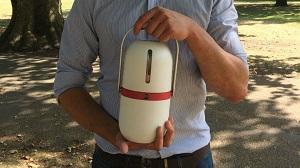 Broadway is an industrial design graduate at Loughborough and has designed an "Isobar" that keeps vaccines at the right temperature when being transported. The device employs a chemical process that creates the perfect environment for the vaccines. It uses a propane burner to heat ammonia and water in a chamber at the bottom of the device (pictured left). Once the cooling is needed, the ammonia vapors are 'pumped' into the main chamber and keeps the vaccinations cold.
Broadway is an industrial design graduate at Loughborough and has designed an "Isobar" that keeps vaccines at the right temperature when being transported. The device employs a chemical process that creates the perfect environment for the vaccines. It uses a propane burner to heat ammonia and water in a chamber at the bottom of the device (pictured left). Once the cooling is needed, the ammonia vapors are 'pumped' into the main chamber and keeps the vaccinations cold.
"I make things every day for people who have everything. I wanted to make something for people who have next to nothing. It should be a basic human right, in my opinion, to have a vaccination," Broadway said.
The device has the potential to improve medical assistance in developing nations. The World Health Organization has reported that issues rendering vaccinations useless cause 1.5 million more deaths per year, worldwide. In developing nations, vaccines are kept cool using ice, which becomes impractical due to vaccines being completely frozen before delivery.
Broadway got the idea when he visited Cambodia and southeast Asia in 2012.
Soon he found the inspiration to create a portable refrigeration unit that would solve an issue he knew was a big problem in the world. Broadway has criticized price markups on medical products that could improve developing nations' health and has said he is not interested in making any money.
Experts have said the refrigeration unit will also be useful for blood donation and organ transplant applications. But what about the non-medical uses?
 Broadway says: "It's risky but there is potential for commercial cooling. It would be a great thing to take on a five-day trip where you have no power."
Broadway says: "It's risky but there is potential for commercial cooling. It would be a great thing to take on a five-day trip where you have no power."
As a result of winning the James Dyson Award for the UK, Broadway received £2,000, which he says he will be using to create further prototypes of the refrigerator. He will also apply for patents. He also goes into the running for the International Dyson Award, where £30,000 will be the prize money for the winner.
"I am so pleased that this technology can get a bit of the limelight. It was such an innovative technology in 1929 that was forgotten and taken over by electric refrigeration," Broadway said.
- Details
- Written by: Quintus Potgieter
- Category: Industry
This news event is no longer live. Read our comprehensive recap of the events below:
- Details
- Written by: Quintus Potgieter
- Category: Developments
What do nanotechnology, polyethylene (plastic), and clothing have in common? Well, they can all be combined to make clothing that helps the person wearing it stay cool, especially in hotter climates. Listen up, engineers who work in high-temperature workplaces! Engineers at Stanford University have created a plastic-based material that can be "woven" into items of clothing. The researchers published their findings in the Science journal, under the title: Radiative human body cooling by nanoporous polyethylene textile.
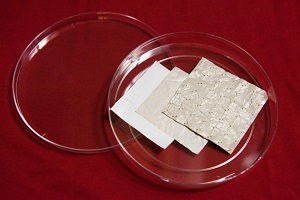
The plastic textile reportedly cools the body in two ways. According to the researchers, the textile is made from a nanostructure that allows the same kind of perspiration evaporation that normal clothes do. However, it also allows body heat, in the form of infrared radiation, to pass through and out of the clothing which is something that normal clothing doesn't do.
What do they plan to do with this newly made textile? Well, it could cut down energy costs because there will be less dependence on air-conditioning systems. Or at least, that's what the engineers would like. Yi Cui, an associate professor of materials science and engineering and the man at the helm of the project at Stanford said: "If you can cool the person rather than the building where they work or live, that will save energy."
Shanhui Fan, a professor of electrical engineering said: "Forty to 60 percent of our body heat is dissipated as infrared radiation when we are sitting in an office. But until now there has been little or no research on designing the thermal radiation characteristics of textiles."
Have we finally reached the breakthrough this Sasol ad hypothesized so many years back?
How did they do it?
In classic nano-engineering fashion, the researchers brought engineering disciplines from all corners together to develop their textile. Working with polyethylene they tested different variants. Eventually, they discovered a variant that was commonly used in batteries. The engineers then treated the variant with chemical processes, until the variant allowed water vapor molecules to be evaporated. The engineers indicated that the water evaporates through "nanopores" in the plastic, which makes the fabric breathable. What they found is that the plastic with, nanostructures built-in will ensure that body heat escapes the clothing. It will also "scatter" any heat that is trying to make it into the clothing.
The material allegedly makes the wearer 36 Fahrenheit (2.7 celcius) cooler in body temperature than conventional clothing. The engineers say this difference in heat could prevent someone from having to turn on a fan or an air-conditioner. Moreover, the engineers say they will keep on working on the material and improve it.
How much will it cost if it does make it to the market? Cui said: "If you want to make a textile, you have to be able to make huge volumes inexpensively." Therefore, the engineers are going to try and keep the cost as low as possible so that it could be affordable to the consumer public.
"In hindsight, some of what we've done looks very simple, but it's because a few have really been looking at engineering the radiation characteristics of textiles," Cui added.
Source: Stanford News
- Details
- Written by: Steve Mackay
- Category: Blog - Steve Mackay
On a regular basis, you will often be confronted with requests for a quick summary of some lengthy meeting or series of documents. You will have to provide the key ideas in simple easy-to-read English with no jargon. Seemingly an intractable task...
Dear Colleagues
On a regular basis, you will often be confronted with requests for a quick summary of some lengthy meeting or series of documents. You will have to provide the key ideas in simple easy-to-read English with no jargon. Seemingly an intractable task. Often the executive summary is all that is read these days. The detailed documents are left for the odd dedicated person who plods through it hopefully looking for a more detailed understanding.
Here with a few tips on achieving this task:
- Identify what you want to achieve with the summary
- Consider who your audience is, what they already know and what they want from your summary?
- Initially do a brain dump on everything you can think of relating to the topic. Don’t worry about the clutter of detail. Just write everything down in a roughly logical sequence.
- Choose the key facts – eliminate all irrelevant detail by considering what your audience want from it (For every detail ask the question: Does my audience absolutely need to know this?)
- Avoid technical jargon. Stick to simple understandable English. Avoid any diversions. Use active case with verbs rather than roundabout language.
- Order the sequence of information so that it is logical and easy to understand.
- Ensure that your write-up is objective and unbiased (by your experiences for example).
- Come back after a few hours (or even a day) and re-read what you have written and ensure that it is easy to understand.
- If you are presenting this; practise and practise until you are perfect and able to handle any awkward questions.
I really love this comment by Edwin Schlossberg: The skill of writing is to create a context in which other people can think.
Yours in engineering learning
Steve
Mackay’s Musings – 6th Sept’16 #616
780, 293 readers – www.eit.edu.au/cms/news/blog-steve-mackay
- Details
- Written by: Quintus Potgieter
- Category: Developments
Internet-less African towns will have to wait for their internet connections a little longer. A satellite belonging to Facebook - for the purposes of supplying the internet to sub-Saharan Africa - was destroyed by an exploding SpaceX Falcon 9 rocket in Cape Canaveral, Florida, on Thursday. There were no injuries reported, however, there were reports of the ground rumbling in areas miles away from the blast site. The estimated losses were said to be $200 million.
Those looking for answers as to what caused the explosion anxiously waited to hear from SpaceX CEO Elon Musk. He tweeted:
Loss of Falcon vehicle today during propellant fill operation. Originated around upper stage oxygen tank. Cause still unknown. More soon.
— Elon Musk (@elonmusk) September 1, 2016
CEO of Facebook Mark Zuckerberg, who, at the time, had made his way from Nigeria and into Kenya on business, took to his platform to express his dismay. He said:
As I'm here in Africa, I'm deeply disappointed to hear that SpaceX's launch failure destroyed our satellite that would have provided connectivity to so many entrepreneurs and everyone else across the continent.
Fortunately, we have developed other technologies like Aquila that will connect people as well. We remain committed to our mission of connecting everyone, and we will keep working until everyone has the opportunities this satellite would have provided.
Zuckerberg, of course, talking about their solar powered, internet-via-drone project that Facebook's engineers have been testing earlier this year.
The explosion comes at the wrong time for SpaceX. After a host of unsuccessful rocket landings, they finally started to get things right with their Falcon 9. The engineers successfully managed to land the Falcon 9 on a barge in the sea after launching, twice. However, in June 2015, a rocket meant to deliver supplies to the International Space Station also went up in flames. Then, yesterday's explosion occurs and adds to the growing list of embarrassing mishaps SpaceX has been seeing.
SpaceX has also announced that it will work with NASA to perform an unmanned mission to Mars by 2018. Stephanie Martin, the spokeswoman for the Kennedy Space Center, unfortunately, had to talk about what effects this blast would have on the future Mars missions. She said: "It is too early to know what impacts there would be (with the manned flights) and it would be inappropriate to speculate at this time. NASA remains confident in its commercial partners, including SpaceX."
The engineers from SpaceX confirmed that the incident took place at Launch Pad 40 at Cape Canaveral, and will now ground any further projects until they know what caused the explosion for sure. They reportedly had another launch planned for Saturday, but that will reportedly not go forward until engineers can say what really caused the Falcon 9's explosion.
- Details
- Written by: Quintus Potgieter
- Category: Industry
A skyscraper under construction in Dubai caught fire on Tuesday afternoon, leading to evacuations of not only the structure but also the Beach Rotana Abu Dhabi hotel nearby. This is reportedly the fifth blaze the United Arab Emirates has seen in 18 months. If you recall, on New Year's Eve, the Address Hotel, a 63-storey five-star hotel, caught fire due to what engineers said was an "electrical short circuit". The blazes will no doubt be a topic of conversation between the civil defense engineers from the Civil Defence Fire Code Council, and the fire safety professionals who banded together to write the UAE Fire and Life Safety Code of Practice.
 According to Business Insider, experts say that "exterior cladding used for decoration or insulation" could have could be causing small fires to spread considerably in buildings in the UAE. The Director of Dubai Civil Defence Maj Gen Rashid Al Matroushi had rubbished these claims back in April. He said: "We are addressing bad construction practices, but civil defense officers cannot monitor every step of the process...There are some who may be cheating when it comes to the materials used in buildings."
According to Business Insider, experts say that "exterior cladding used for decoration or insulation" could have could be causing small fires to spread considerably in buildings in the UAE. The Director of Dubai Civil Defence Maj Gen Rashid Al Matroushi had rubbished these claims back in April. He said: "We are addressing bad construction practices, but civil defense officers cannot monitor every step of the process...There are some who may be cheating when it comes to the materials used in buildings."
The rumor is that flammable cladding materials made from plastic fillings are positioned in between aluminum panels and bad construction practices could be responsible for the spreading fires.
For safety sake, in June 2015, the Dubai Civil Defence connected 40,000 buildings to a system named the Dubai Life Safety Dashboard. The system checks if fire sprinkler systems are in working order and ensures that fire safety is where it needs to be. All of this checking up involves fire protection engineering.
Jane Lataille, a fire protection engineer who published her book Fire Protection Engineering in Building Design, says that fire protection engineers, from a structural standpoint, are in charge of the "strength, thickness and fire resistance rating of building construction materials."
Therefore, the fire protection engineers need to be questioned about the fires that are breaking out in business areas where new high-rise buildings are being constructed in Dubai.
Fire protection engineers concern themselves with the following elements when contributing to the construction of a building:
- Locations of buildings
- Exposures to buildings
- Sizes of buildings
- Size of fire areas
- Building layout
- Combustibility of building finishing materials
- Security issues
- Jane Lataille, Fire Protection Engineering in Building Design
The combustibility of building finishing materials is something that has been focused on since New Year's Eve in Dubai. A crackdown on combustible materials must occur if there is still contravention of the rules as stipulated by the Civil Defence.
The National Fire Protection Association in the United States, as a result of bad construction practices, has published multiple codes and standards guidelines. For the finishing materials - like the cladding that has been criticized in the UAE - there are codes and standards that inform the fire protection engineers what needs to be checked. According to Lataille, the engineers should do tests for "radiant flux of floor covering systems", tests for any burning characteristics of the actual building materials, the heat release statistics of any materials used in the construction process, the evaluation of the textile wall coverings and ceiling coverings.
After that, fire protection engineers have to worry about interior building layout which involves portable fire extinguishers, hoses, and indoor sprinkler systems. To see how crucial engineers are to the fire protection industry, check out this video from the Department of Fire Protection Engineering from the University of Maryland:
- Details
- Written by: Quintus Potgieter
- Category: Developments
In the mere eight months that 2016 has seen, industrial robotics has been a hot topic. Electronics companies, even shoe factories, are now fully automating some of their more repetitive tasks, prioritizing the efficiency of a robot above the efficiency of a human being. China has called on the expertise of German engineering to try and equip their factories with the very best industrial robots, and Barack Obama has been informing steel workers that jobs that have been replaced by automated systems might never come back. There hasn't been a better time for industrial companies to own industrial robots than now.
Whose market is it anyways?
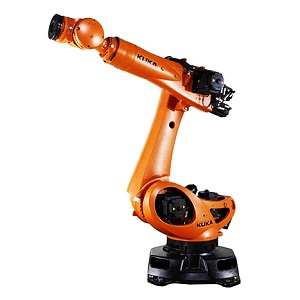 It's all about the industrial robot, it seems. Something no one expected, however, was that non-industrial robots would surge forward in the markets and overtake the market size that industrial robotics have been enjoying. According to a report by a research company who specialize in robotics - Tractica - industrial robots will only see 41% of total robotics revenue, whereas they currently hold 50%. The other 59% will belong to non-industrial robotics. The report was entitled Robotics Market Forecasts.
It's all about the industrial robot, it seems. Something no one expected, however, was that non-industrial robots would surge forward in the markets and overtake the market size that industrial robotics have been enjoying. According to a report by a research company who specialize in robotics - Tractica - industrial robots will only see 41% of total robotics revenue, whereas they currently hold 50%. The other 59% will belong to non-industrial robotics. The report was entitled Robotics Market Forecasts.
Tractica defines these non-industrial robots as consumer robots, enterprise robots, military robots, unmanned aerial vehicles, and autonomous vehicles. The director of research at Tractica , Aditya Kaul, said: "The definition of a robot is in flux and traditional robot manufacturers that have been building and supplying robots for decades have seen this industry undergo a dramatic transformation in the past few years."
Considered in this context, it is not surprising to see why non-industrial robots are doing so well. The FAA published new guidelines for unmanned aerial vehicles this year, in a move they say could produce 100,000 new jobs and generate $82 billion for the American economy. Home assistant robots are also slowly making their way to the market, as well. We focused on ASUS's Zenbo Robot recently. A robot that will be joining a host of new automated technologies for the home.
Furthermore, Tractica estimates that the robotics industry will grow from $34.1 billion in 2016 to $226.2 billion by 2021, solidifying a compound annual growth rate (CAGR) of 46%.
Industrial engineers, fear not
One novel idea that would see industrial robots gaining in the market, is using industrial robots for non-industrial applications. As these engineers have shown, industrial robots could even be used as the next generation of tattoo artists. The video show's the world's first tattoo performed by an industrial robot. After months of preparation, the engineers tirelessly worked to show that even industrial robots, in their robustness, can be precise enough to delicately work on a human object.
ABB Robotics have also outlined what the most popular applications for industrial robotics are. These applications will be keeping industrial robotics in the market due to their practicality, industrial companies have seen their usefulness. ABB has supplied many industrial engineering companies their robots, building more automated operations all over the world. Their top 10 list is as follows:
- Arc welding
- Spot welding
- Materials welding
- Machine tending
- Painting
- Picking, packing and palletizing
- Assembly
- Mechanical cutting grinding, deburring and polishing
- Gluing, adhesive sealing and spraying materials
- Other processes (inspection, waterjet cutting, soldering)
Source: Tractica
- Details
- Written by: Quintus Potgieter
- Category: Developments
It was bound to happen at some point. The Federal Aviation Administration - more widely known as the FAA - have begun their crackdown on lithium-ion batteries. This proverbial shot across the bow from the FAA is a warning to engineering companies developing and utilizing lithium-ion batteries, to tighten up battery safety. 36 months ago, what are being called "fire-prone" lithium-ion batteries caught fire on a Boeing 787, alerting the public to the fact that some lithium-ion batteries could suffer from being susceptible to a process known as "thermal runaway". In this process, the heat inside and outside of a lithium battery stretches past what it can handle, whereafter the batteries become flammable.
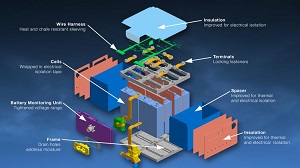
Boeing's engineers were scrutinized for the batteries catching fire and were encouraged to redesign the batteries. The aircraft uses the lithium-ion battery for backup power. Now, the batteries are stored in "fireproof containers" (pictured left) that ensure, if a fire does break out, it prevents it from escaping into the plane. Ventilation tubes are now also in place, so that if any chemical explosion occurs, the fumes are transferred to the outside of the aircraft.
According to the Wall Street Journal, the FAA have delivered their safety guidelines for the 737 passenger jets and the 767 cargo jets to Boeing. The new terms suggest that Boeings' battery design should "eliminate the potential for uncontrolled failures". If uncontrolled failure does happen, the FAA warns that the company should take the necessary steps to ensure that any onboard passengers will remain safe. The safety regulations are not only directed at Boeing alone, the FAA is hoping that all aircraft companies will abide by their new guidelines.
However, Airbus disagrees with the new guidelines, in terms of the metal casing for the backup lithium-ion batteries. The FAA is suggesting Airbus fit their A350 aircraft with the precautionary mechanism, but the company seems reluctant to sign off on the idea. They've been saying "no" since last September. The company maintains that its batteries are smaller and safer than Boeing's and won't need the fireproof containers.
It was Airbus's Executive Vice President of Engineering Charles Champion, in an interview to Flight Global, who said: "If you start to put a huge coffin around the battery system in place then you lose all the benefit of the lithium-ion battery." Airbus utilize batteries built by Saft, a world leader in renewable energy technology that was recently bought by Total S.A.
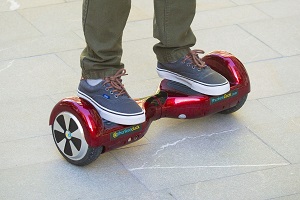 Fire-prone lithium batteries are nothing new. The United States's Consumer Product Safety Commission reported that by July 2016, up to $2 million in property damage - as a result of 60 fires - were caused by so-called "hoverboard" technologies (pictured left). The multicell lithium battery packs within the hoverboards - that house 20 lithium ion cells per board - have been declared as a fire hazard. Once the lithium batteries inside surpass their heat thresholds, they tend to catch fire. If one catches fire, all of them follow.
Fire-prone lithium batteries are nothing new. The United States's Consumer Product Safety Commission reported that by July 2016, up to $2 million in property damage - as a result of 60 fires - were caused by so-called "hoverboard" technologies (pictured left). The multicell lithium battery packs within the hoverboards - that house 20 lithium ion cells per board - have been declared as a fire hazard. Once the lithium batteries inside surpass their heat thresholds, they tend to catch fire. If one catches fire, all of them follow.
"After months of excellent, round-the-clock work by our engineers, investigators and compliance officers, CPSC has secured the recall of more than a half-million hoverboards by 10 different companies," said CPSC Chairman Elliot Kaye.
Source: Wall Street Journal
- Details
- Written by: Steve Mackay
- Category: Blog - Steve Mackay
You’ve just won a great contract but have to work in a team. And no matter how outgoing and extroverted you are as an engineer, you don’t necessarily have good team interaction skills. Engineering projects are increasingly complex and need a team to succeed. Especially today.
Dear Colleagues
You’ve just won a great contract but have to work in a team. And no matter how outgoing and extroverted you are as an engineer, you don’t necessarily have good team interaction skills. Engineering projects are increasingly complex and need a team to succeed. Especially today.
Often, teams are brought together for a specific project and operate out of different offices and then break up once the project has been completed. Web based collaborative techniques (such as web conferencing) are making the interface between different groups seamless and one of the buzzwords today is the virtual team. It is rare today to see one engineer developing a product and getting it to market on her own. If one has an outstanding team with a bunch of design engineers with different skill sets working together from around the world, one has a higher probability of getting a high quality innovative product to market quickly.
A few ways to make your engineering team really work well:
Ensure outstanding leadership of the team. This is surely the most important (and often neglected area). Not only a traditional leader but someone who is enthusiastic, ensures everyone in the team knows everyone else, glues everyone together, extracts every ounce of ability from the team members and gives an overall vision of where the team is heading. And can handle the frequent setbacks. This leader has to mediate the inevitable disputes that will arise with a wise long term approach. Finally, some careful management is required to help the team navigate the trade-off between: as a team “you sink or swim together” against “every team member must be held accountable for their tasks”.
Drive deadlines hard. It is important to highlight deadlines well before they occur and ensure that they are met. Provide support when needed to meet the deadlines.
Plan practically and hard. Detailed useful practical plans which everyone has ownership of examining resources (watch out for writing software !) are essential.
Prioritize and compromise. All plans for the individual groups must fit together. Where problems with resources arise, priorities must be quickly revised and compromises made.
Educate, train and keep improving. Team members (and the leader) should identify the strengths and weaknesses of everyone and provide mutual support. Identify resources each person brings to the team and use these. Keep improving the team member’s skills and know-how and functioning as a team.
Communicate aggressively. Ensure everyone across the group is aware of what is happening – no matter how painful. Break down the silo mentality and ensure everyone communicates openly and often about how their particular part of the project is developing. Social interaction between team members is vital to success.
Involve the client. No matter whether the client is an internal company member or an outside party, it is important that they see how the project is taking shape. And are involved in the inevitable design compromises. Due to contractual issues, they may be less enthused with giving any tacit support, but listening carefully to them can be helpful.
Don’t take short cuts which compromise quality. Obviously, one should always look for improved ways of doing a job. But in the drive to finish the job as quickly as possible, often short cuts may be taken, which can seriously undermine the quality or final product performance. It is best to do the hard yards and face up to these issues as soon as possible.
Think of the other person before yourself. Try and understand the difficulties and challenges the other team members have. And provide them with unsolicited support. As in a good partnership, look after them.
Cut out the rot quickly. When things go wrong or a team member is not playing ball; face up to the particular problem and deal with it quickly. Don’t delay otherwise the problems spreads and impacts on everyone else. The leader needs to counsel the disaffected team member, get them back on track or move them onto other activities.
Nurture your team. As both a leader and team member look after your team. With education/support and training. Help with problem solving difficulties. And whilst avoiding the “jolly hockey sticks” mentality, build up the esprit de corps and morale with positive activities. A team is a delicate rose and needs constant attention.
Face up to contractual issues quickly. If there is a variation developing because of some team development or a client change request; ensure that the change in direction is highlighted to everyone immediately and the client is also apprised of the costs or project change as soon as possible.
Measure – measure – measure. Whether you are the leader or a team member, track your progress in the project in terms of costs and time and obviously the real progress of the product or project.
A great positive team experience, means that you will be even better shape for the next team project.
Two great quotations this week:
To succeed as a team is to hold all of the members accountable for their expertise.
Mitchell Caplan, CEO, E*Trade Group Inc.
Players win games, teams win championships. Bill Taylor
Thanks to Catherine S. McGowan of the IEEE for her interesting article which served as a timely inspiration for me.
Yours in engineering learning
Steve
Mackay’s Musings – 30th August’16 #615
780, 293 readers – www.eit.edu.au/cms/news/blog-steve-mackay
- Details
- Written by: Steve Mackay
- Category: Blog - Steve Mackay
You may be one of the many engineering professionals not particularly enthused with the idea of making presentations – perhaps terrified on some occasions. The reasons may be that the audience shows obvious boredom and the poor presentations reflect badly on one.
Dear Colleagues
You may be one of the many engineering professionals not particularly enthused with the idea of making presentations – perhaps terrified on some occasions. The reasons may be that the audience shows obvious boredom and the poor presentations reflect badly on one. It is thus ends up as not a particularly pleasant experience for both the audience or the presenter.
You’re unlikely to ever hear from someone, who has to attend an engineering presentation, that they are looking forward to it. This short note gives some suggestions on making it a memorable occasion – in a positive sense, of course.
Doing a high quality presentation is a key part of every engineer, technician or technologist’s toolkit. And helps make your career and job considerably more successful.
And by application of one simple rule (sounds like black magic or a quick get rich scheme doesn’t it?); you can dramatically improve your presentations. And that is practice. Practice. And more practice. As well as applying some tips below.
Personally, I find practice a bit irritating and unpleasant. Going through one’s slides a few times is often tedious and unrewarding work (like discovering your old smelly running socks in your backpack a few weeks later?). But it works; and pays off with great feedback from your audience.
In preparing your actual presentation – ensure that it is simple, addresses the issues in a clear way and is interesting. Not the same old dross. And avoid excessive reliance on powerpoint slides.
Four Reasons Why Practising Your Presentation Helps You
The first reason is to eliminate your nervousness when presenting. When you have practised your presentation thoroughly you will find your nervousness disappears. Once you start your presentation; your lines and ‘patter’ seem familiar to you, giving you comfort and you quickly build up your confidence and can then focus on your audience. Nothing is more nerve wracking than not knowing your presentation and at the same time having to interact with the audience.
Secondly, you can then focus on interacting more spontaneously with your audience and catering to their needs and requirements. You can focus on individuals, their reactions, their body language and those who may have lost interest in what you have to say. You can drive up their interest level by throwing questions out to them to get them more involved. And thus avoid the one way monotone presentation.
Thirdly, you can be more dynamic in your presentation and respond to particular audience needs. Jumping to a particular slide as a result of a question or dealing with a particular issue brought up by the audience on the whiteboard. All help to show everyone that you are a person obviously in command of the subject and the issues.
Finally, every successful presentation you give, makes the next one slightly easier and builds on your skills in presenting. Some of our instructors who were initially very poor presenters; by practice and a large number of presentations; have become superb at their craft. Simply, because they have practised over hundreds (thousands?) of presentations.
Professionals know the Key Secret to Excellence is Practice
Most good speech makers, actors and indeed trainers know the power of practice. Actors are a great example of professionals who practice until they know their lines, facial expressions, tone of voice, gestures and movements so intimately that they can be absolutely spontaneous and bring the play or film to life.
How to Practice
A few suggestions on how to practice your presentation:
- It is best to go through all your slides several times and to present verbally as if you are in front of your audience (but presumably to your dog or cat or mirror). Build up confidence in your phrasing, time allocation and think of potential questions that may come up from the audience. Commence powerfully and with energy and enthusiasm. Avoid reading off the slides, but talk around them.
- Prepare your presentation equipment and ensure your computer connects to the overhead projector and the audio and video (esp. when embedded in powerpoint or another program) all works seamlessly.
- Prepare any associated equipment so that it all works well. Test equipment and instrumentation can sometimes be embarrassingly slow to boot up or not do exactly what you require.
- If you are getting anyone else to co-present make sure you have carefully synchronised with them on what they are going to say. Ensure it adds value to your presentation; isn’t repetitive or embarrassingly poorly done.
- Practice your call to action. What do you want to achieve with your presentation? What do you want your audience to leave with? Finish off with a powerful energised last slide and exhortation to action.
- Finally, ensure your time management is done well – if you have a deluge of questions but only a fixed time; what can you cut back on? And if you have an embarrassingly quiet audience, what can you add in to the presentation to ensure it runs for the full time?
- Ensure throughout that you do not read off the slides but sound like someone completely in control of their subject, friendly and enthusiastic. Chat to the audience as colleagues ¬- not as a patronising professor to 250 first year engineering students who have just commenced study.
Thanks to Susan De La Vergne of the IEEE for an eminently readable article on doing great presentations.
You Can’t always be Perfect
A Roman emperor (Augustus Octavius) remarked two thousand years ago:
Practice, the master of all things.
Yours in engineering learning
Steve
Mackay’s Musings – 23rd August’16 #614
780, 293 readers – www.eit.edu.au/cms/news/blog-steve-mackay
- Details
- Written by: be-change
- Category: Announcements
Engineering in the first world and engineering in the third - developing - world is vastly different. Therefore, being the engineering “change” is not as cut and dry as it sounds. Why is that? The answer is technology. The Dean of Engineering, here at the Engineering Institute of Technology, Steve Mackay, explains: “One of the challenges we have is that we have the Western world, with ferocious access to technology and then we’ve got the third world - or the developing world - where things are not as good, where, in fact, you’ve got billions of people without sanitation, without drinking water, a real, real, problem.”
Furthermore, the education in the developing world also has differences to the Western world. Mackay believes, however, that the Western world can add value in the developing world through engineering. This has its limitations. The Western world will have technologies that the developing world does not have. So, why does the Western world just not throw the poorer countries a bone and give them the advanced technologies?
“One of the critical things is when you do get involved with projects in the developing world, it’s not to try and apply some massive, highly advanced, sophisticated infrastructure [or] advanced manufacturing. The trick is to go for barefoot engineering; which is, low-cost technology appropriate to the actual community you’re in,” Mackay adds.
Barefoot engineering can also refer to engineering without qualifications in developing nations. Bunker Roy (71) is an Indian activist and educator. In 2011, Roy gave a TED Talk on the subject of a college he created named the Barefoot College. The college was built in Rajasthan, India, with the help of illiterate laborers. The college teaches men and women how to become solar engineers, artisans, dentists and doctors in their own villages. Roy said these people do not need a paper qualification to determine how equipped they are to offer a service to the people of their country. It is not about money and fancy technologies to the developing world, it is about the survival of human beings.
“We redefined professionalism,” Roy said in his TED Talk. “Who is a professional? A professional is someone who is a combination of competence, confidence, and belief.” He believes that knowledge and skills are universal, and even illiterate people can become engineering professionals. In the Western world, the emphasis on theory-based learning prioritized above technical training can sometimes lead to engineers who do not know the practical uses of technologies that developing worlds could use. So, the developing world’s barefoot engineering “professionals” can teach qualified engineers a thing or two.
However, poorer nations are in need of help from engineers who could put their knowledge and skills to good use and improve the developing world’s quality of life. Whether or not they do that, was the focus of George D. Catalano’s book Engineering, Poverty, and the Earth. He questions whether engineers are, indeed, the “world-improvers” that - in his mind – they are supposed to be. Catalano believes engineers must focus on environment degradation and poverty, something, he believes, engineers have not done in the past. He writes: “[Engineers] strive for maximum profit during the shortest period of time with minimum investment.”
However, there are a group of engineers that strive for the improvement of developing nations with a strict focus on utilizing the technologies of the developing nations. One entity that exists to assist with solving global challenges in engineering, is the non-governmental organization named Engineers Without Borders (EWB). The Canadian branch of the NGO is particularly instrumental in Africa, working towards global poverty eradication through using technologies native to African territories. The engineers attempt to understand and implement cost-effective technologies that will benefit the engineering community of the developing world.
EWB Canada does not work for the benefit of their engineers but rather for the engineers of an impoverished nation. The organization encourages African countries to put politics aside and focus on enriching the continent through engineering. At the end of the year, the engineers that are actively involved in any engineering projects in the developing world publish their shortcomings and failures in what they call the Failure Report. The report is used as a motivational tool for the engineers, constantly encouraging them to learn from the failures of past projects so that they can continue innovating and doing well in developing nations. The organization makes the point that publishing their failures means they may be highlighting their failures but it does not mean they have been defeated or unsuccessful.
Furthermore, the Engineers Without Borders movement also embeds entrepreneurial skills into the communities so that they can build functioning industrial businesses in agriculture and civil engineering for a developing country that might need them most. The CEO of EWB Canada, Boris Martin, says that seed-funding projects in third world countries are not about gaining profit for both parties, but rather contributing to the struggling countries themselves. He says the organization shows how big a part engineering can play in early stage ventures that just need the small technological and knowledgeable push in order to become working systems that can benefit a small village, community or entire country.
Mackay says that engineering can benefit both your local communities and the communities in the third world. He outlines a list of engineering feats that have been perfected in impoverished nations. Reusing industrial waste and implementing solar energy projects for the heating of food, water and general lighting are just some of the things that engineers have been able to contribute. He concludes: “I just want to urge you to jump in there and assist in your small way with a project, in those communities. It is amazing how rewarding it is when you actually help someone else.”
Here at the Engineering Institute of Technology, we offer a six-month Graduate Certificate of Renewable Energy Technologies program, beginning on the 16th May, 2017. Please contact us for more information, spaces are very limited.
- Details
- Written by: Quintus Potgieter
- Category: Developments
Engineers use emojis too. Except they see them graphically represented on a piece of software that isn't a chatting platform, but rather, a software that is showing how happy an industrial facility is. By happy, we mean, how efficient and how streamlined an industrial process is going -- which in turn makes an engineer happy. We are talking of course about the Human Machine Interface that displays data in facilities all around the world. Humans need to see data presented to them in ways they would understand. That is why Human Machine Interfaces are important.
Why do we need HMIs?
 Engineers need HMIs to show exactly how the industrial control systems - the SCADA systems, the PLCs and more - are operating. The HMI will even show the engineer when security parameters have been breached. HMIs are important to the efficiency of an industrial operation, thanks to virtualization.
Engineers need HMIs to show exactly how the industrial control systems - the SCADA systems, the PLCs and more - are operating. The HMI will even show the engineer when security parameters have been breached. HMIs are important to the efficiency of an industrial operation, thanks to virtualization.
Virtualization of industrial operations will be a very important feature in a future that will see another layer of added interconnectivity thanks to the Internet of Things (IoT). The data that would be available to engineers with these updated systems will ensure that industrial facilities perform faster and more efficiently in the future. This is due to the real-time nature of the HMI software that would display the industrial processes of the facility immediately.
Modern industrial facilities are growing. The amount of hardware in the industrial facilities including the number of remote devices that need to work in cohesion with the hardware. It requires a system to unify the data input sources so that everyone on the facility is on the same page. This is where the HMI software comes in.
For instance, Wonderware's InTouch platform is used in one-third of the world's industrial facilities. It includes graphical representations of general machine security, the working machinery systems within a factory, a number of times a button had been pressed and many more applications.
Some PLCs (programmable logic controllers) come with HMIs in a package deal these days. Those are integrated HMIs, but you also get non-integrated HMI solutions that an engineer can use in his/her industrial facility.
Continued innovation
As the Internet of Things continues its mission of getting the world to embrace the fourth industrial revolution (Industrie 4.0), engineers will be working with human-machine interfaces more than ever before.
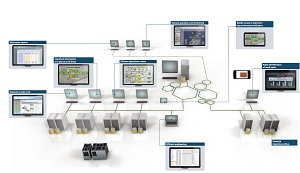 Siemens' SIMATIC WinCC V7 is another HMI solution that advertises fewer downtimes for industrial facilities, rapid access to data, and the fast integration of existing hardware. The retrofitting of HMI software to already-existing SCADA systems is something engineers are looking for in industrial facilities that cannot afford to update the entire system. It also unifies all of the systems and allows for employees of an industrial facility to see the compiled and real-time data that keeps them all on the same page. The business side of an industrial operation instantly benefits from the HMI's virtualization of operational data.
Siemens' SIMATIC WinCC V7 is another HMI solution that advertises fewer downtimes for industrial facilities, rapid access to data, and the fast integration of existing hardware. The retrofitting of HMI software to already-existing SCADA systems is something engineers are looking for in industrial facilities that cannot afford to update the entire system. It also unifies all of the systems and allows for employees of an industrial facility to see the compiled and real-time data that keeps them all on the same page. The business side of an industrial operation instantly benefits from the HMI's virtualization of operational data.
Cybersecurity of SCADA systems and other ICS systems rely on HMI interfaces so that engineers are aware when systems have been targeted, or if there is an operational issue in industrial facilities. HMI is central to the SCADA databases' visual representation as well. Furthermore, the HMI can display the operational data in graphs and other graphical representations. With the number of remote operators, with the added gigabytes of data that will be observed by industrial machinery, cybersecurity for ICS is absolutely necessary. HMI assists and makes this process easier thanks to the visualisation of networks and systems.
To become more knowledgeable and proficient in HMI system competency, engineers or technologists can get their professional certificate of competency in Wonderware InTouch HMI through the Engineering Institue of Technology. The course will teach HMI applications from scratch through online e-learning. Designing graphics and animations, including the configuring of alarm systems for security purposes, are also included in the course. Follow the link to read more about it.
- Details
- Written by: Steve Mackay
- Category: Blog - Steve Mackay
Have you experienced the frustration and futility of searching and applying online for hundreds of jobs – particularly in the engineering and technology space? Perhaps, you feel that you are casting your resume into the abyss whenever you apply online.
Dear Colleagues
Have you experienced the frustration and futility of searching and applying online for hundreds of jobs – particularly in the engineering and technology space? Perhaps, you feel that you are casting your resume into the abyss whenever you apply online.
Unhappily today, you often have to get your resume past an army of robots looking for keywords before handing over a select few resumes to a human recruiter to look at. Some firms are even proactively scanning the web looking for personnel with the perfect characteristics matching a particular job profile. Other strategies are to require you to upload a video to the web with you answering specific questions.
This is all making it extraordinarily difficult for you to actually talk to a human. And it makes it critical for you to follow the right steps in dealing with this plethora of technology so that you can gain an interview.
Predictably the first step is simple
This is for you to review the job description and ensure your resume is aligned with what the recruiter requires in terms of experience and qualifications in a measurable way.
This is to make it easy even for an orang utan to see that you are the perfect match for the job. This doesn’t mean that you must lie but you must put effort in to visualise what the job requires and align your resume with the job. Ensure that you use the relevant key words so that they get picked up by the robots doing the initial scan of resumes. Perhaps put in the acronyms relating to the hardware or software requirements.
Stay up-to-date at all times
Keep everything relating to your online career up to date. This means not only your resume but LinkedIn profile and other social media sites.
Smile for the Camera
Many interviews are conducted online and through Skype. Ensure you are 100% presentable and prepared for any interview. Whether it is demonstration of your sales or technical skills or simply as an interview.
Assess your Performance and Consider Alternative Strategies
If despite all this work; you are still hitting the black hole in terms of results – sit down and consider what you are doing. Get a colleague to assess your resume or presentation and make suggestions. Consider that you may be applying for jobs in an overtraded area where demand is low and supply huge.
Perhaps you should be using other strategies to gain your dream job in engineering – such as gaining more credentials or experience or joining an online discussion group in the topic area. Actively networking with others in the industry is a strategy which engineers tend to be less enthused with but which can work wonders for a job search.
Above all – persist and don’t give up. Ultimately your grit and determination will prevail in your job search.
Yours in engineering learning
Steve
Mackay’s Musings – 16th August’16 #613
780, 293 readers – www.eit.edu.au/cms/news/blog-steve-mackay
- Details
- Written by: Quintus Potgieter
- Category: Education
Engineers...it’s time to talk about your feelings. Starting your career in engineering can be a daunting undertaking. Are you happy with how your engineering career is progressing? Are you afraid of your future in engineering? Are you considering studying something else? Are you coping with the workload? Is the money worth what you’re doing right now? Are you generally happy? These are the kinds of questions that would make someone working in engineering - or studying towards working in engineering - become introspective.
Manel Baucells and Rakesh Sarin, both engineers, released a book entitled Engineering Happiness: A New Approach for Building a Joyful Life. Their book focuses on the idea that if engineers have been able to engineer such amazing things that humans benefit from, could they not also engineer happiness itself? In the book, the engineers say they have created the fundamental equation of happiness. They write it as: HAPPINESS equals REALITY minus EXPECTATIONS.
Furthermore, in the chapter ‘Defining Happiness’, they write: “Happiness is composed of the momentary feeling that we all have when things are going our way, when the weather is beautiful, or when our favorite team just won the big game. And unhappiness is composed of the unpleasant feeling we all have when we get a bad grade or catch flu.” However, there is further puzzlement as to what would cause engineers to be unhappy. And, they’re using a term that is gaining in its seriousness.
They’re calling it the ‘quarterlife crisis’. A time in a millennial's life where uncertainty is a dominant feeling. Making the change from student life to working life in their twenties, and then feeling as if they have made the wrong job-decisions as they settle into their thirties, are the suggested causes of a quarter life crisis. Depression sets in soon thereafter, where the millennials feel trapped in an unhealthy situation of not enjoying what they have decided to do with their lives. Some may already be in their jobs and feel that there is no light at the end of the tunnel. Additionally, The National Survey on Drug Use and Health (NSDUH), United States, have reported that 8.4 percent of full-time college students aged 18 to 22 years old have experienced major depressive episodes.
Dr. Oliver Robinson as the University of Greenwich further delves into the relatively new-sounding quarter life crisis in his study: Emerging Adulthood, Early Adulthood, and Quarter-Life Crisis:Updating Erikson for the 21st Century. The study offers a window into what the different phases of a quarter life crisis look like. Robinson says that those going through the crisis might remove themselves from a situation that has them feeling trapped. The person then develops new commitments more relevant to what interests them. This is something an engineer who feels they’ve gone into the wrong job could potentially do. It is easier to find a new path in early adulthood than it is when you’re much older.
Robinson’s study has resonated with engineers online who have commented that the modern engineering industry has produced a handful of graduates who are uncertain that they truly chose the right engineering training. Another engineer, who has only been employed in 3 months, commented, saying: “It was the same for me and I’ve never had an engineering job until 3 months ago. I think it’s a 2-something thing and not industry specific.”
However, At the University of Waterloo, Canada, a group of researchers conducted a study on the mental health of their engineering students based on their classifications. The research was titled: Analyzing the Mental Health of Engineering Students using Classification and Regression. They compiled a questionnaire that was distributed amongst the students and subsequently based their findings on the results. The questions were set with consideration to guidelines provided by the Canadian Mental Health Association.
The researchers found that overall mental health was affected with the number of hours of homework students had. They also found that second-year students posted the highest mental health numbers, showing that they were the happiest. Electrical engineers were found to suffer from lower mental health scores due to the competitive nature of their programs. Whereas, system design engineering students had the highest scores due to the amount of teamwork involved and the flexibility of their curriculum. Moreover, women in engineering reportedly also had lower mental health overall. The lack of happiness for women in engineering could be tied to the male-dominated nature of engineering industries, where women may feel out of place.
At the end of the day, engineering studies and engineering workplaces are high-pressure industries that require responsible, steadfast and motivated people. The harsh reality is that some humans cannot deal with the pressure attached to engineering, and, as a result, experience the quarterlife crises. This year alone, there have been an unprecedented number of engineering student suicides. If you happen to be having suicidal thoughts here is a page of worldwide suicide prevention hotline numbers: HOTLINE NUMBERS.
On a lighter note, The Institution of Civil Engineers recorded a video that further encourages engineers to feel “happy” in their engineering workplaces. They are trying to lure more students in, showing that engineering can be fun. Despite being in serious workplaces, they want to show that human happiness can shine through it all. The video even has Sir John Armitt, one of Britain's most successful civil engineers who was very instrumental in the construction of London 2012 Olympics facilities that have now become part of the country’s infrastructure.
- Details
- Written by: Steve Mackay
- Category: Blog - Steve Mackay
“We only just need a plausible explanation as to why the emissions are still high!!!” was apparently the note from an unnamed Volkswagen employee to deal with the US regulator querying the actual levels.
You’re probably aware of this scandal where Californian regulators are pursuing Volkswagen (VW) to come clean about the real level of emissions from their vehicles...
Dear Colleagues
“We only just need a plausible explanation as to why the emissions are still high!!!” was apparently the note from an unnamed Volkswagen employee to deal with the US regulator querying the actual levels.
You’re probably aware of this scandal where Californian regulators are pursuing Volkswagen (VW) to come clean about the real level of emissions from their vehicles and who was involved. James Liang – a veteran engineer of over 30 years is apparently one of the key players. Perhaps also a fall-guy. No one can be quite sure at this stage.
The Way to Trick Regulators was Clever – perhaps too Clever
VW admitted a year ago that an estimated 11 million of its cars were designed and built in such a way that they would recognise when the car was undergoing a test for emissions. Cleverly enough, the car engine management software had been written so that when a particular combination of the car’s speed, acceleration and position of the steering wheel (indicating that the car was on a dynamometer for testing purposes), the noxious nitrous oxide pollution would be reduced (presumably at the cost of performance). This would enable VW to dodge the onerous regulations for emissions control and to beat the competition.
What a Great Investigative Team at West Virginia University to uncover this scandal
After concerns were identified by the university team testing the cars; the regulators had to trick the car’s software into believing that it was on the road and not being tested). The emissions were then measured under what the software believed were normal driving conditions and of course, were found to be too high. And then of course the game was over for the engineers and others at Volkswagen.
Pontificating
I don’t intend to pontificate about this but what puzzles me is why an engineer would want to beat tough and persistent regulators throughout the world is beyond me. There wouldn’t be any dramatic improvement to his career and with the number of cars on the road eventually someone would figure this deception out.
A few lessons from this scandal are:
- Unethical behaviour is eventually exposed. Best to come clean immediately something is wrong and deal with the problem.
- Always follow Robert De Niro’s advice when considering a test result: When there is any doubt, there is no doubt.
Yours in engineering learning
Steve
Mackay’s Musings – 9th August’16 #612
780, 293 readers – www.eit.edu.au/cms/news/blog-steve-mackay
- Details
- Written by: Quintus Potgieter
- Category: Industry
Science fiction is a genre completely defined by the theoretical applications of engineering and science in a fictional context, showing what the future of our world (or the worlds after ours) might look like. Fictional stories with fictional engineers have inspired the real-world engineers from all over the world, all wanting to emulate their favorite characters. Moreover, engineers sometimes even look to science fiction to study the effects of what a writer has warned the world of creating, or encouraged the world to create. For example, the Orwellian video surveillance, GPS tracking and more that Goerge Orwell warned of in his book 1984, was an eerily accurate prediction of how the world would progress up to present day. Isaac Asimov's books are still instrumental to this day. They help in hardwiring the three laws of robotics into the future of collaborative robots that will coexist with humanity.
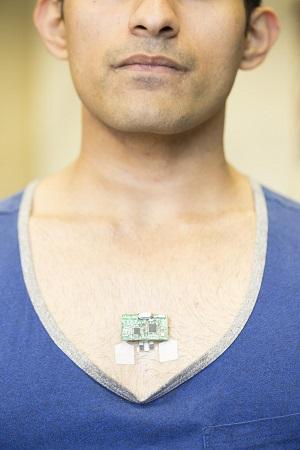 Some engineers talk of how watching Star Trek inspired them to further investigate how things work and developed their knack for being an engineer. MIT Media Lab Researchers Dan Novy and Sophia Brueckner, in 2013, hosted a class named Science Fiction to Science Fabrication to show how science fiction writers' theoretical principles have made their way into the real world. The class would show how augmented reality, virtual reality, ideas of utopia and dystopia, nanotechnology and even wearable technologies have been inspired by fictional texts. Similarly, The Center for Science and the Imagination at Arizona State University also started a project in 2014 named Project Hieroglyph. The project would see students in both engineering and science reading a science fiction anthology of stories named Hieroglyph. In their own words, Project Hieroglyph say the anthology is "set in the future, from some of today's leading writers, thinkers, and visionaries" to try and encourage a new wave of innovators who could improve our world.
Some engineers talk of how watching Star Trek inspired them to further investigate how things work and developed their knack for being an engineer. MIT Media Lab Researchers Dan Novy and Sophia Brueckner, in 2013, hosted a class named Science Fiction to Science Fabrication to show how science fiction writers' theoretical principles have made their way into the real world. The class would show how augmented reality, virtual reality, ideas of utopia and dystopia, nanotechnology and even wearable technologies have been inspired by fictional texts. Similarly, The Center for Science and the Imagination at Arizona State University also started a project in 2014 named Project Hieroglyph. The project would see students in both engineering and science reading a science fiction anthology of stories named Hieroglyph. In their own words, Project Hieroglyph say the anthology is "set in the future, from some of today's leading writers, thinkers, and visionaries" to try and encourage a new wave of innovators who could improve our world.
In May of this year,a group of engineers at the University of California San Diego announced that they had developed the world's first, flexible, wearable device that could monitor "both biochemical and electrical signals". The engineers called it a tricorder and were hoping to take it the Qualcomm Tricorder X competition that promises prize money of up to $10 million. A tricorder is a fictional hand-held device used in Star Trek that would scan a person's body and do a data analysis, eventually supplying medical data so that a patient could be diagnosed.
"Reading science fiction is like an ethics class for inventors, and engineers and designers should be trying to think like science fiction authors when they approach their own work," Brueckner said. Science fiction allows engineers to see what the possible impact an invention might have on the future of the world and could ensure stricter design principles when designing an item that could lead to societal change.
The world has seen a plethora of science fiction due to innovations that present the world with new obstacles and new opportunities. We went scouring the web for answers on who the best fictional engineer of all time was. What we found was that there are a whole bunch of engineers new and old in the world of fiction that could be inspiring the next generation of young people to further pursue STEM (science, technology, engineering, and mathematics) careers. These were the results:
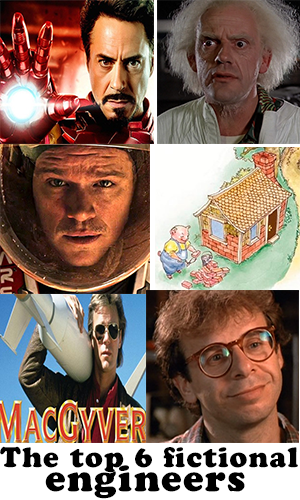 #1: Tony Stark
#1: Tony Stark
Some say Elon Musk is the living, breathing Tony Stark of our real world, however, no one can match up to the fictional owner of Stark Industries. Named the "quintessential capitalist" in the Marvel comics, the fictional engineer has been inspiring mechanical engineers for decades. The innovative suit is an impressive feat of mechanical engineering and has been used as an example of what future U.S. Military Tactical Assault Light Operator Suits could look like in the future of warfare. If you watch Marvel movies, you would see all sorts of influences from the writers behind Stark Industries that envision a future policed by Iron Man suits and flying cars. These flashy, capitalist ideas of engineering marvels have cemented Tony in the number one spot.
#2: Doc Brown
In science fiction, time travel is an idea that could not be perfected without engineers or scientists. In the Back to the Future trilogy, the world renowned Delorean Time Machine gets itself in and out of timelines by using the flux capacitor. Doc Brown got the idea when he slipped and bumped his head whilst trying to hang a clock up in his bathroom. So, engineers, next time you bang your head and have an idea, follow your gut and just invent it. Throughout the trilogy we see the zany engineer utilizing all sorts of futuristic technologies and warning about how it could all impact civilization.
#3: Mark Watney
Matt Damon plays Mark Watney in the film, based on a book named The Martian. It sees aerospace engineer, Watney, left on Mars after a manned mission goes wrong. Watney then has to utilize his engineering skills to both grow food on Mars and figure out how to make contact with NASA to try and get himself rescued. SpaceX and NASA are in talks about a possible Mars mission in 2018, and potentially manned missions soon after that. It would be a good idea to pick up a copy of the blu-ray before they decide to send anyone up there.
#4: The pig who built the brick house
We all know the story. The three little pigs who were tormented by the big bad wolf who blew their houses down. Except, one engineering-savvy pig who built a brick house the wolf couldn't blow down. Now that's the sort of civil engineering ingenuity we can all be proud of.
#5: MacGyver
A new series of MacGyver has been announced for 2016, however, we're talking about old school MacGyver that lit up the screens from the year 1985. He is considered to be an engineer due to his complex understanding of how things work and can repurpose everyday items into tools that help him escape from danger. His resourcefulness sees him turning items into different end products. Additionally, MacGyver always carries a Swiss Army Knife and duct tape with him.
#6: Wayne Szalinski
Ah, yes. The dad-engineer from Honey, I Shrunk the Kids . If he didn't inspire a host of fumbling engineer-wannabes we don't know who did. An inventor by nature, Wayne had a solar-powered car, predicting a future of solar-powered vehicles which are becoming a big reality. He just seemed to be an engineer that suffered a bad case of Murphy's Law. But his forward-thinking inventions cements him as one of the internet's favorite fictional engineers.
- Details
- Written by: Steve Mackay
- Category: Blog - Steve Mackay
A few weeks ago I was intimidated by an amazing collection of experts in biomedical engineering. I made a few suggestions on the way their careers would develop.
Dear Colleagues
A few weeks ago I was intimidated by an amazing collection of experts in biomedical engineering. I made a few suggestions on the way their careers would develop.
I clearly remember being a young student being very briefly indoctrinated into the mysteries of biomedical engineering at Groote Schuur hospital by the inimitable heart surgeon, Chris Barnard. As you would probably recollect – his passion was on heart transplants and the heart pacemakers in those days were embarrassingly brutally simple in operation compared to the purring kit today.
I made a few suggestions to this learned gallery of biomedical experts as to the incredible opportunities we can all harness as engineering professionals today in our careers, as outlined below.
Click here to download the presentation.
Significant Changes
Many of the changes today are driven by being in a hyper connected world. Where the Internet of things (IoT) will act to connect us together to sensors and controllers. Virtual reality, automation and artificial intelligence will continue to improve in leaps and bounds.
Fourth Industrial Revolution
This all forms part of the Fourth Industrial Revolution. The first three were mechanisation (steam), electrical power (Ford Motor Cars) and digital (transistors and microchips). The fourth one - in essence - is about software.
The Significant Trends are about such elements as:
- Cybersecurity – hacking galore is something we have to fight against.
- Internet of Things – everything is connected today.
- Artificial Intelligence/Automation – meet a robot today.
- Virtual and Augmented Reality – think of Pokemon.
- Cloud Computing – centralising computing at a server.
- Drones – have your pizzas delivered by air.
- Big Data – analyse the sea of information for trends and wisdom.
- Renewable Energy – with storage batteries we have suddenly got our own power station.
All exciting stuff – now we need to hitch a lift on some of these trends for our engineering careers.
Remember as Robert A. Heinlein remarked: ‘One man’s “magic’ is another man’s engineering. “Supernatural” is a null word’.
Yours in engineering learning
Steve
Mackay’s Musings – 2nd August’16 #611
780, 293 readers – www.eit.edu.au/cms/news/blog-steve-mackay
- Details
- Written by: Quintus Potgieter
- Category: Developments
It was just the other day that Switzerland opened the longest railway tunnel in the world. Now, Norway is planning the world's first underwater tube-shaped tunnel. A masterpiece of structural engineering that will consist of two 1,200 meters (4,000 ft) concrete tubes that will lie 30 meters below the surface of the Norwegian sea. The tunnel will connect the city of Kristiansand to the city of Trondheim. Norway already has the record for the largest road tunnel in the world ;The Lærdal Tunnel is 15.23 miles long (24.51-kilometers). It looks like they're on their way to another world-first record.
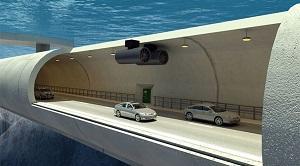
According to Wired, if you were to drive from Kristiansand to Trondheim it would take you 21 hours on the roads that already exist. Not to mention, the number of ferries you would have to take due to Norway's notorious fjords and difficult to navigate mountainous areas. There are 7 ferry rides that need to happen to complete the journey from Kristiansand to Trondheim. The tunnels are set to make the journey a tad more streamlined. The engineers behind the project say that the new underwater tunnels could eliminate 10 hours of travel time once built. Norway will be funding the project, with a handsome $25 billion. Construction is expected to be completed by 2035.
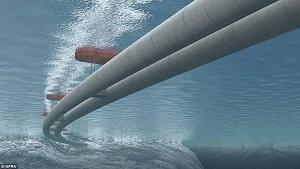
The tunnel will be held up by pontoons, that would be secured with trusses to keep them in one place. The engineers confirmed that going underwater by 60 to 100 feet would ensure that should storms happen, the floating tunnel would be safe.
Arianna Minoretti, a senior civil structural engineer from the Norwegian Public Roads Administration (NPRA) says that they might also bolt the tunnels to the bedrock to ensure further stability. "Having this connection means that people there do not have to wait for a helicopter to go to the hospital." She also says that driving through the tunnel, to a driver, would feel like any other tunnel.
The NPRA also maintain that the original scenery will not be disrupted so those who still wish to make the journey the long way around will still be able to do so. However, those who want to shave some time off of their travel times will find the tunnels very useful. The idea of the underwater tunnels might also inspire other countries to follow suit with similar tunnel designs once the success of the Norwegian tunnels is shown.
- Details
- Written by: Steve Mackay
- Category: Blog - Steve Mackay
Have you been working for a number of years as an engineering professional and have steadily moved into interdisciplinary practice? Where you examine the total system rather than simply one element of it.
Dear Colleagues
Have you been working for a number of years as an engineering professional and have steadily moved into interdisciplinary practice? Where you examine the total system rather than simply one element of it.
Further to this; are you proactive, demonstrate leadership & initiative, can communicate well, think laterally and outside the box and are solutions-oriented? If so; perhaps you should consider that you are indeed a systems engineer. Or are rapidly on your way to becoming one.
The best career in engineering
Money magazine (quoted by Platt) referred to Systems Engineering as one of the best careers in the USA based on US stats data showing solid growth.
Complex Modern Systems
Increasingly complex modern (engineering) systems require a holistic view. Something not provided by the standard one-dimensional electrical/mechanical or electronics engineer for example. Systems Engineering connects all the different components of a system together.
The classical example occurs in aerospace; where the systems engineering process investigates the customer’s needs and problems that need to be solved. The alternative approaches are then examined; the system is modelled and the various components are integrated. The optimum (prototype) system is then built and its performance assessed and further optimization examined.
Seven Tasks to Systems Engineering (referred to as SIMILAR)
The seven tasks defining systems engineering include:
- State the problem
- Investigate Alternatives
- Model the system
- Integrate the system
- Launch the system
- Assess performance
- Re-evaluate
How to become a Systems Engineer
The best way to become a systems engineer is to build up a broad interdisciplinary engineering background. Electrical / mechanical / software / mechatronics / control systems with a strong theoretical and practical background in each area. And then have a good understanding how the different systems interact with each to produce an optimum product. One has to be able to be able to work with multiple disciplines and show leadership to them. Thus communications is an essential part of the job. Tough decisions often have to be made – decisions which because they relate to the entire project – may not be understood (or indeed appreciated) by an individual discipline engineering professional.
Systems engineering would appear to be mainly in the aerospace and military spheres but it is across all fields of engineering ranging from car manufacturing, building plants & infrastructure, oil and gas, mining and transport and in many newer areas. A great example of a growing field of systems engineering is the smart grid – dynamic, complex with many different disciplines involved in its creation coupled with a high degree of uncertainty and a great opportunity to optimise. Or smart self-driving cars – the number of different disciplines here are mind boggling.
Certainly true of systems engineering: The wisest mind has something yet to learn.
(George Santayana).
Thanks to the IEEE, John R. Platt for a great article on Systems Engineering and the systems engineering web site: http://www.sie.arizona.edu/sysengr/whatis/whatis.html
Yours in engineering learning
Steve
Mackay’s Musings – 26th July’16 #610
780, 293 readers – www.eit.edu.au/cms/news/blog-steve-mackay
- Details
- Written by: Quintus Potgieter
- Category: Developments
With two weeks to go, the Rio Olympics' grim outlook continues. The Australian Olympics team has a bone to pick with the civil engineers that constructed the Athletes Village. They have complained that the village is "not safe or ready" to live in. The complaints range from blocked toilets to exposed electrical wiring. The Aussies have refused to live in the apartments and have rather opted for hotels in the surrounding area until their building is ready. The Australian team's head of mission, Kitty Chiller, did not mince any words when talking to the media.
"Problems include blocked toilets, leaking pipes, exposed wiring, darkened stairwells where no lighting has been installed and dirty floors in need of a massive clean. This is my fifth Olympic Games, I have never experienced a Village in this lack of state of readiness at this point in time," Chiller said in a statement. She did, however, say that the rest of the Village looked to be one of the more beautiful villages seen in recent history.
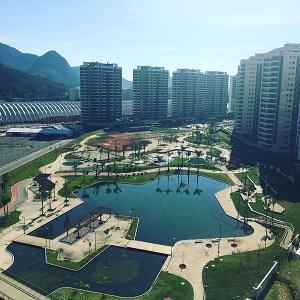
Mayor of Rio de Janiero, Eduardo Paes has refuted the claims and has hit back at the Australians. He has said that Rio's village is "more beautiful and better" than Australia's village that was built when they hosted the 2000 Olympics in Sydney. However, the Australians maintain that the Rio Village is barely habitable.
Mahe Drysdale is an olympian on the Kiwi rowing team for New Zealand this year and has moved into the Village. He took to Instagram with the photo you can see to your left, saying: "All is good, few finishing touches still to be made but when you arrive at 5am on opening day you can't expect it to be perfect."
Similarly, the South African men's under-23 football team landed in Rio and reported that their specific apartments were up to standard. Rio de Janiero will see 15,000 to 18,000 athletes descending upon the Athletes Village and hopes to have it fully ready before the opening ceremony of the Olympics, on August 6th. It is said to be the biggest Athletes Village in the history of the Games. Once the Olympics is finished, the apartments will be put on sale and advertised to the Brazillian public.
To get a clearer picture of the engineering endeavours Brazil has seen on the back of hosting another large-scale sporting event, José Roberto Bernasconi, the president of Brazil's architecture and engineering union spoke about the country's great achievements in engineering. He spoke to the Huffington Post earlier this year, saying: "Rio went through a transformation after it was decided that it would host the Games. There was a great change in mobility and urban infrastructure with the recovery of downtown Rio, the demolition of the elevated expressway, and the Museum of Tomorrow. Those are extraordinary man-made works, combined with the city's natural beauty. It is a gain."
Nonetheless, the engineers who have designed and constructed the buildings on the lead up to the Olympic Games will be heavily scrutinized if something goes wrong in the upcoming weeks. However, it seems that the initial reports of unhabitable conditions in the Athletes Village will be handled come opening day. The only thing left to say is: "Game on." To see more of the Athletes Village, take a look at this video compiled by RT:
- Details
- Written by: Quintus Potgieter
- Category: Developments
Want to be a successful engineer? Have a master plan. Or better yet, have two master plans. Elon Musk, the CEO of SpaceX, Tesla Motors and co-founder of SolarCity, OpenAI and PayPal has released his second master plan. The master plans refer to the feats of engineering he hopes to achieve in the new future. Basically, a vision and mission statement as if he was sat in a job interview and asked: So, what do you want to achieve in the next ten years?
Musk says that ten years ago he penned his first master plan. And it looked something like this:
- Create a low volume car, which would necessarily be expensive
- Use that money to develop a medium volume car at a lower price
- Use that money to create an affordable, high volume car
And...- Provide solar power. No kidding, this has literally been on our website for 10 years.
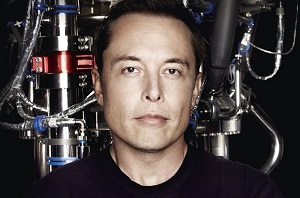 Now, Musk has released his Master Plan: Part Deux.
Now, Musk has released his Master Plan: Part Deux.
Firstly, Musk wants to create a "smoothly integrated and beautiful solar-roof-with-battery product that looks good". This is already in progress. Tesla and SolarCity have joined forces that will join up the efforts of both companies and see them integrating their current products into one ecosystem of solar technology. This will encourage more work into sending the Powerwall technology into a global marketplace.
Then, Tesla will be expanding into the freight truck world, developing what Musk calls the Tesla Semi. Musk says they will engineer freight trucks that reduce the cost of cargo transportation with engineers who worked on the Model S. Which means we would be looking at trucks that are powered by lithium-ion technology and would potentially be self-driving. The third item on Musk's new master plan was to secure self-driving mini buses as well. The company will also be working on pick-up trucks, adding to their long line of electric vehicles.
"As the technology matures, all Tesla vehicles will have the hardware necessary to be fully self-driving with fail-operational capability, meaning that any given system in the car could break and your car will still drive itself safely. It is important to emphasize that refinement and validation of the software will take much longer than putting in place the cameras, radar, sonar and computing hardware," Musk said.
This cautious nature of the language chosen by Musk here is on the back of incidents that relate to the AutoPilot software already inside their vehicles. One of Tesla's vehicles recently caused a fatal accident. However, Musk is still adamant that self-driving technology is the way to go and once their software is ten times safer than human drivers, they will take it out of the beta phase.
The final part of Musk's renewed master plan is to make sure that the electric vehicles they produce lead to a world where the consumer gets money back for providing energy to the grid. He simply calls it: sharing. It's not a new idea for energy management industries, however, it is a rarely practiced one due to the scarcity of electric vehicles. Nonetheless, the way it will work is, consumers will be able to opt-in to a Tesla shared fleet. This would be done by simply using an app that would then begin sharing some of the capacity of a charged lithium-ion battery, i.e. providing energy to the grid. Musk says: "Since most cars are only in use by their owner for 4% to 10% of the day, the fundamental economic utility of a truly self-driving car is likely to be several times that of a car which is not."
In summary, Elon Musks's Master Plan: Part Deux:
Create stunning solar roofs with seamlessly integrated battery storage
Expand the electric vehicle product line to address all major segments
Develop a self-driving capability that is 10X safer than manual via massive fleet learning
Enable your car to make money for you when you aren't using it
- Details
- Written by: Quintus Potgieter
- Category: Developments
Residential energy storage systems have seen a major uptake in Australia. LG Chem has said that Australia's interest in energy storage systems has signalled a "critical solar decade" for the country. 2016, in the first seven months, has been the biggest year for Australian residential home batteries due to entire suburbs receiving subsidised energy storage systems. 200 houses in Canberra received discounted Tesla PowerWalls in a pilot program that emphasized Australia's willingness to adopt residential energy systems.
Onwards and upwards, Tesla has announced that a second residential microgrid is being set up in 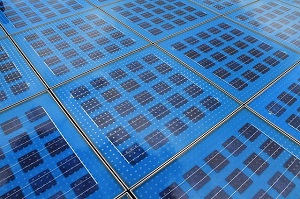 Australia. According to Seeking Alpha, a development named "Merri-green" in Melbourne will be receiving twenty Tesla PowerWalls connected to rooftop solar photovoltaic technologies. A single house's setup is said to be approximately $7400+ for the entire solar PV, storage unit, and energy management link.
Australia. According to Seeking Alpha, a development named "Merri-green" in Melbourne will be receiving twenty Tesla PowerWalls connected to rooftop solar photovoltaic technologies. A single house's setup is said to be approximately $7400+ for the entire solar PV, storage unit, and energy management link.
Earlier in April, PV-Magazine revealed that 170,000 households in West Australia would see rooftop photovoltaic energy solutions installed this year. The Australian Renewable Energy Agency (ARENA) says that entire suburb microgrids present a unique opportunity for energy retailers, developers, and consumers alike - where everyone benefits. The microgrids will also supply energy to utility grids, selling energy back to the grid, which then gives consumers pay back benefits to renting out apartments and houses with rooftop PV solutions. Recent reports by GTM Research indicate that Australia's energy storage market would have grown by 37-fold between 2015 and 2020.
Australia aims to achieve 100% renewable energy by 2020. One of the ways they are trying to do this is by implementing dozens of microgrid solutions to entire suburbs. The country already has 5 gigawatts of energy produced by rooftop solar PV technologies. Australia is reportedly also used as the "testing field" for 27 battery suppliers, making the country one of the most important players in the energy storage industry.
Blog - Steve Mackay
EIT's Technical Director, Steve Mackay, enjoys keeping his blog up-to-date with useful tips and current industry matters for his fellow colleagues. He has a loyal and expanding following base reaching over 300,000 people around the world.
Student Stories
In this section you have the opportunity to read and listen to EIT students talking about the reality of the programs. Discussions are wide-ranging and include information about the study commitment required, the value of the qualification in their careers, the relevance of the subject matter, future pathways, and more. They provide valuable feedback for you to take into account before you decide to join one of our programs.
Career Information
Latest career information including industry research, podcasts, blogs, life hacks and general information about how you can make the most out of your career.
Education
Here you will find out more about the latest trends and developments within education worldwide, along with some helpful articles regarding study tips and keeping on track with your studies.
Developments
The latest innovation and inventions from the world of engineering can be found here. Learn about advances in technology and how they can make a real difference within your industry.
Announcements
Keep up to date with the latest announcements from the Engineering Institute of Technology. In this section you can read more about new courses, new recognition from professional bodies, our Excellence in Teaching Award, upcoming free webinars and much more.
Monthly Update
We understand that you may not have time to read all the articles that we post, so our monthly update gives you access to some fascinating articles which cover the best of the months news in a compact format.
Engineering Resources
The key objective of the Engineering Institute of Technology is to provide outstanding practical engineering and technology education. Together with several industry and educational partners we gladly share the following resources and information to assist you along your professional development path. Please note that some of the articles will open a new internet browser tab and redirect you to other partner websites.
